Winston-Salem, North Carolina, United States
Architect: Perry Maxwell (1939)
My Quick Review: One of the best routings in golf and a tremendous set of greens. Despite it's top-100 status, Old Town remains one of the country's hidden gems.
The Routing
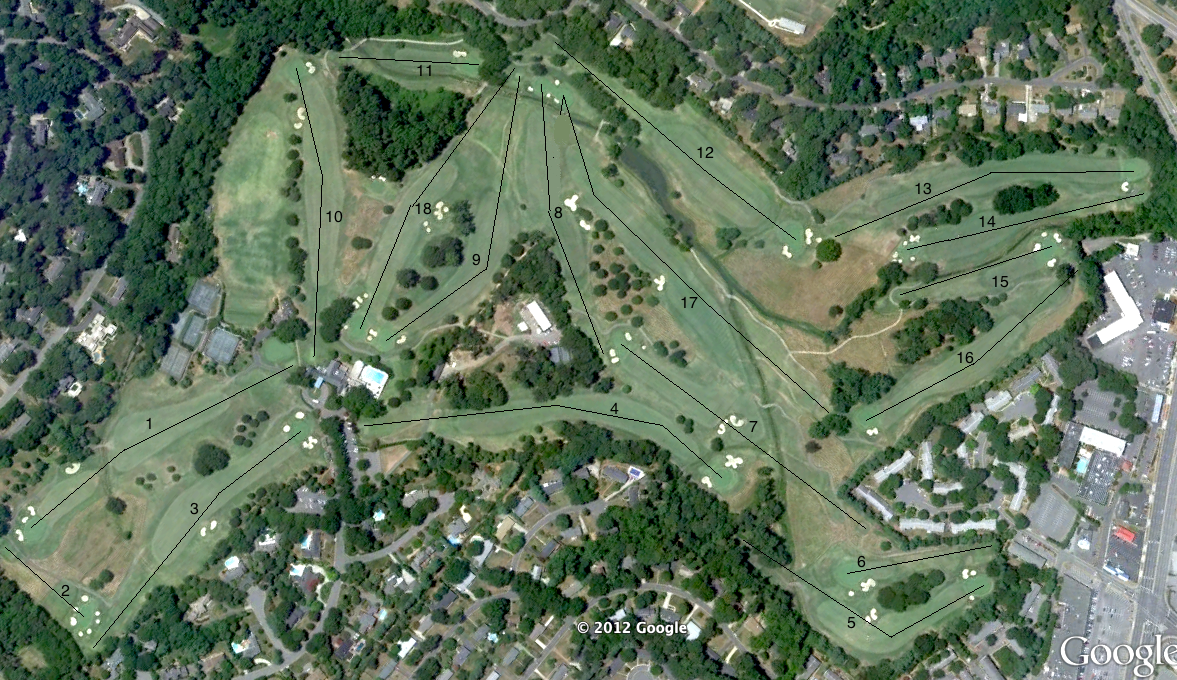
A couple of Maxwell routing traits to note...
1) Maxwell liked to return to the clubhouse in loops. Unlike some of his works in Oklahoma and Kansas where he would create 4 or 5 or even 6 (at Muskogee I believe), Old Town only returns to the clubhouse 3 times, and only once other than 9 or 18.
2) Maxwell liked to position the clubhouse at the highest point on the property, and this is what was done at Old Town.
3) Most importantly, as noted in Chris Clouser's The Midwest Associate, Maxwell's routings made great use of the "natural land features found on the site." This is certainly the case at Old Town as Maxwell very effectively routed the course over and across some exceptionally rolling terrain, focusing on having either tees or greens elevated. There are only 3 holes on which the tee and green are at similar elevation, and 2 of those are routed across steeply sloping terrain.
The land at Old Town is also blessed with a single stream (though it branches in one place) that runs through the property. Maxwell must have loved this feature and figuratively bashes you over the head with it. It must be crossed on holes 4, 7, 8, 9, 11, and 17, and it runs parallel to holes 12, 14 and 15. Really genius.
Further, the low point on the property, sitting next to the stream is a gorgeous and serene place. Maxwell must have thought so too. He built a hub of tees and greens, with 9 tee, 12 tee and 18 tee, and 8 green, 11 green and 17 green all on a piece of land just over two acres(!).
Lastly, Maxwell allowed the clever golfer the option of 'previewing the shot'. Cresting the hill on the 4th hole, the 7th green is in clear view.. a putting surface that cannot be seen from the 7th fairway. The golfer would do well to take note of the pin position.
Similarly, the 15th green is as wild as they come, not so far a distant cousin from Coore/Crenshaw's 8th at Sand Hills. It is not possible to see this boomerang from the 15th tee, but it sure is possible to see it from the 14th fairway, which gets as close as 30 feet to the 15th green.
Holes to Note
Hole 1: Par 4, 423 Yards
As is a Maxwell trademark, the first is situated just steps from the clubhouse on a high piece of property to a fairway down below. The single fairway bunker on the right serves as an aiming marker, though it is impossible to know this on one's first play. What appears to be the ideal line down the left will leave the golfer in the rough for his approach.
Tee View:

Approach View:
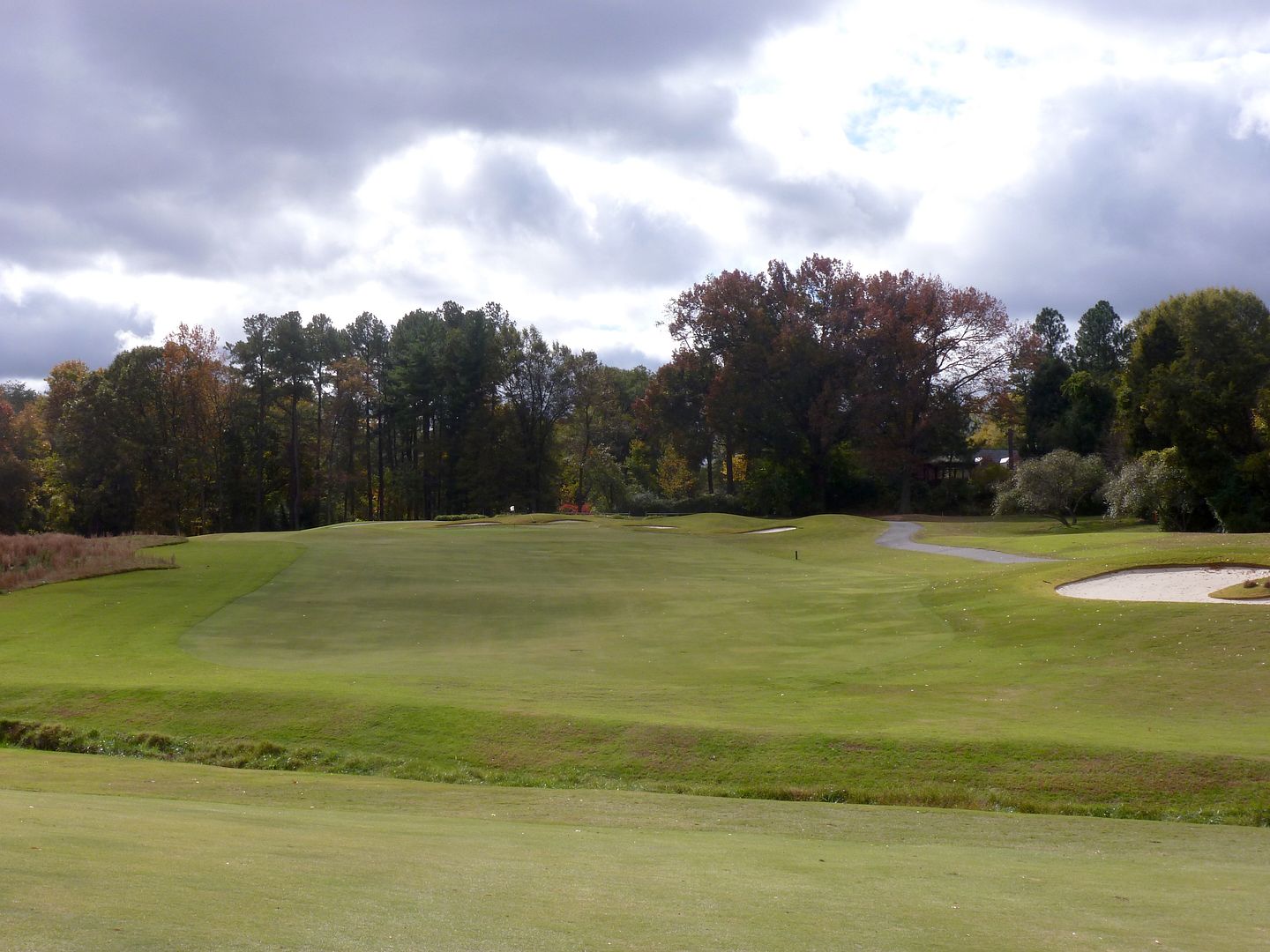
The first of many great greens at OTC. The green flows with the land, sloping severely from right-to-left. A false-front and deep drop-off left make this a difficult target to find from the approach, which is played from a downhill lie to an uphill green.
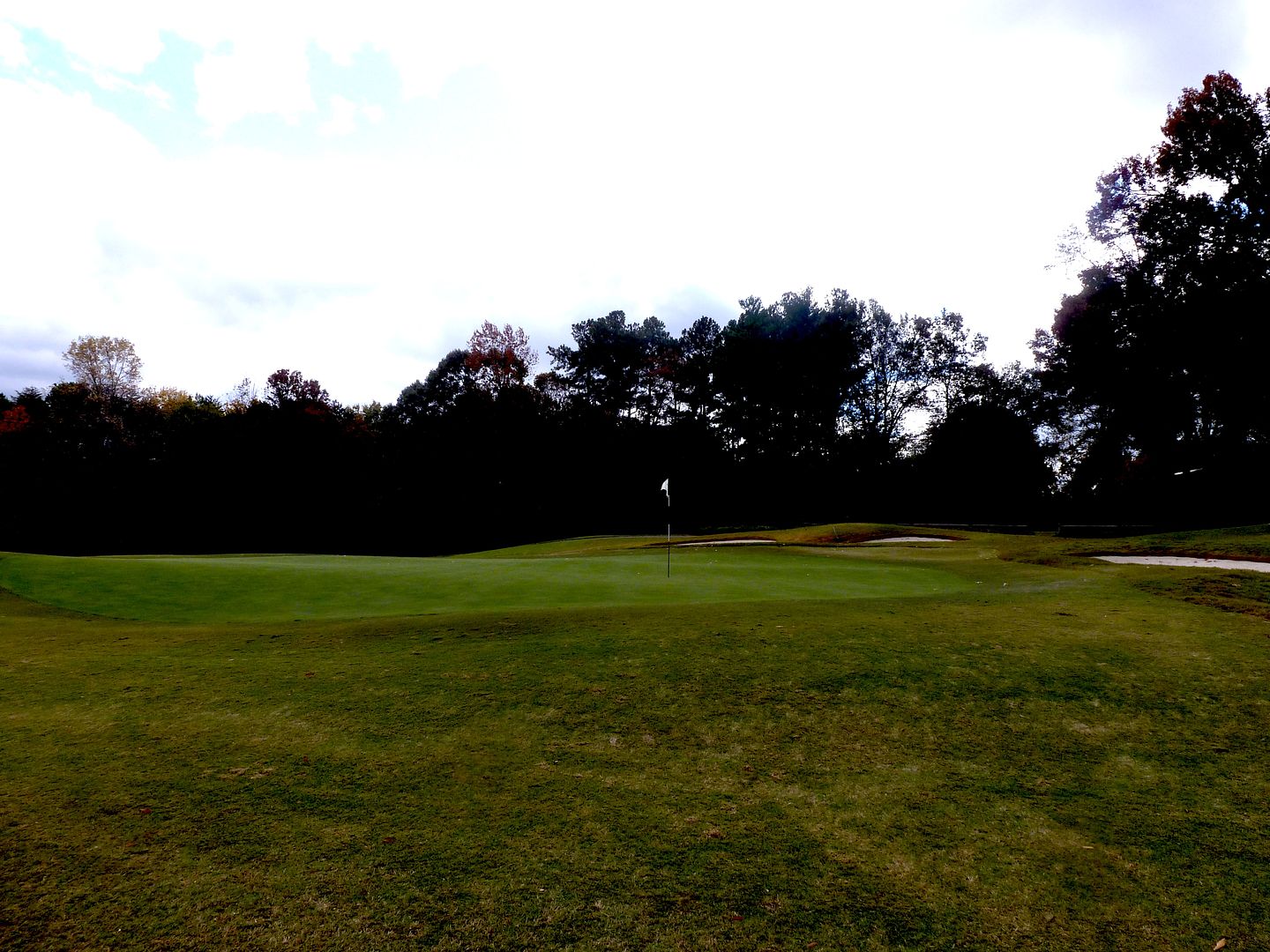
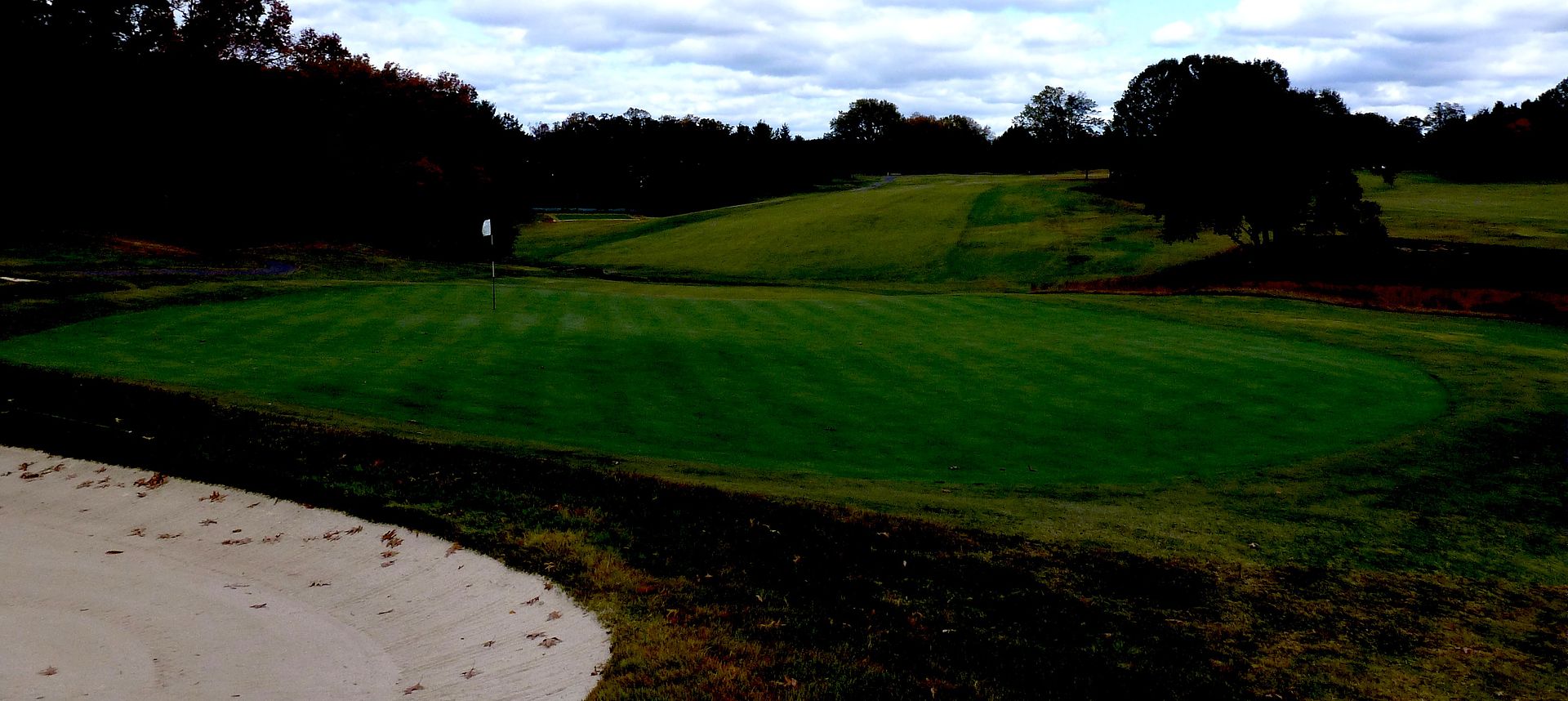
Greensite as seen from 3 fairway:
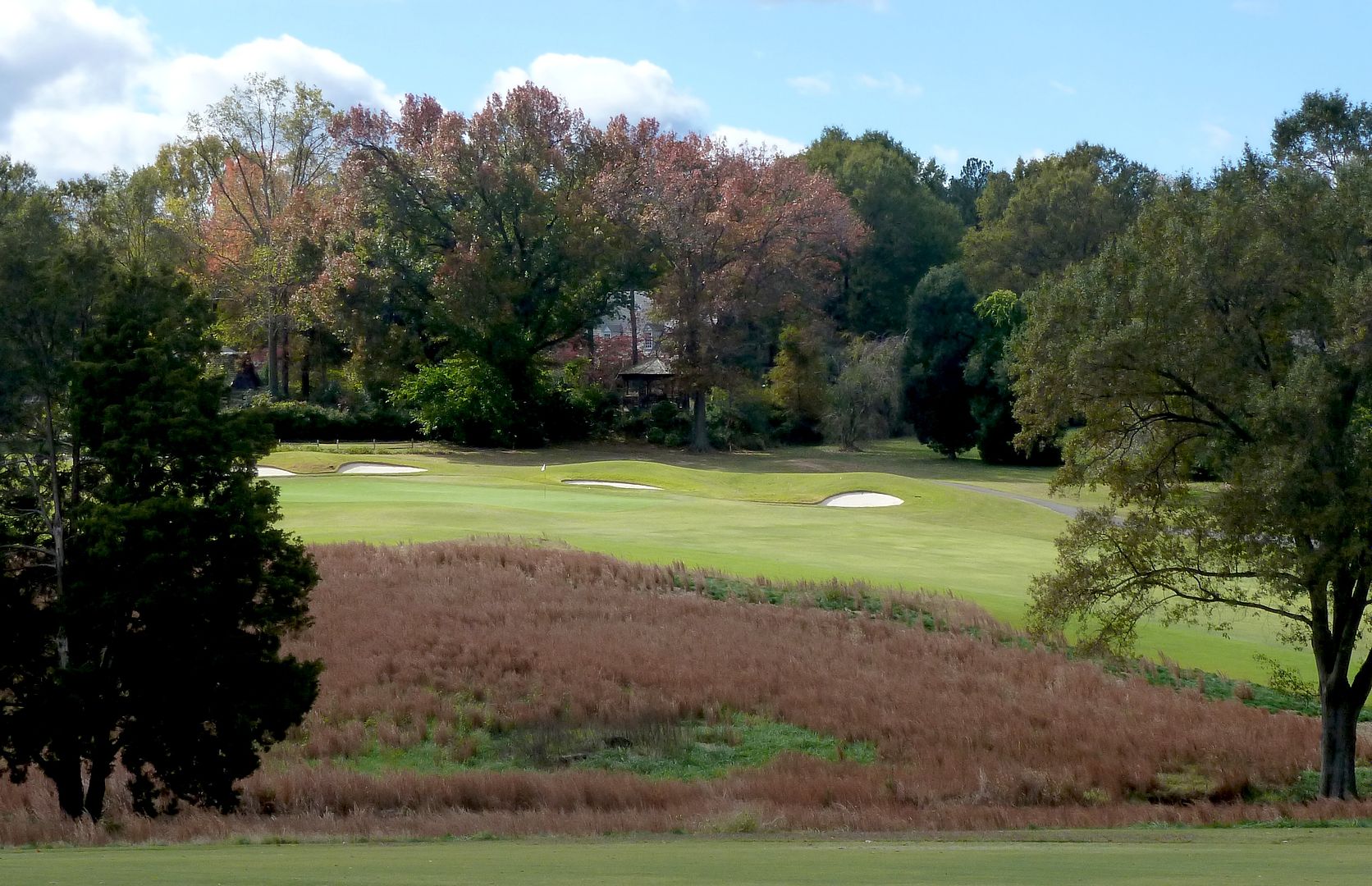
1 from 2nd Tee:
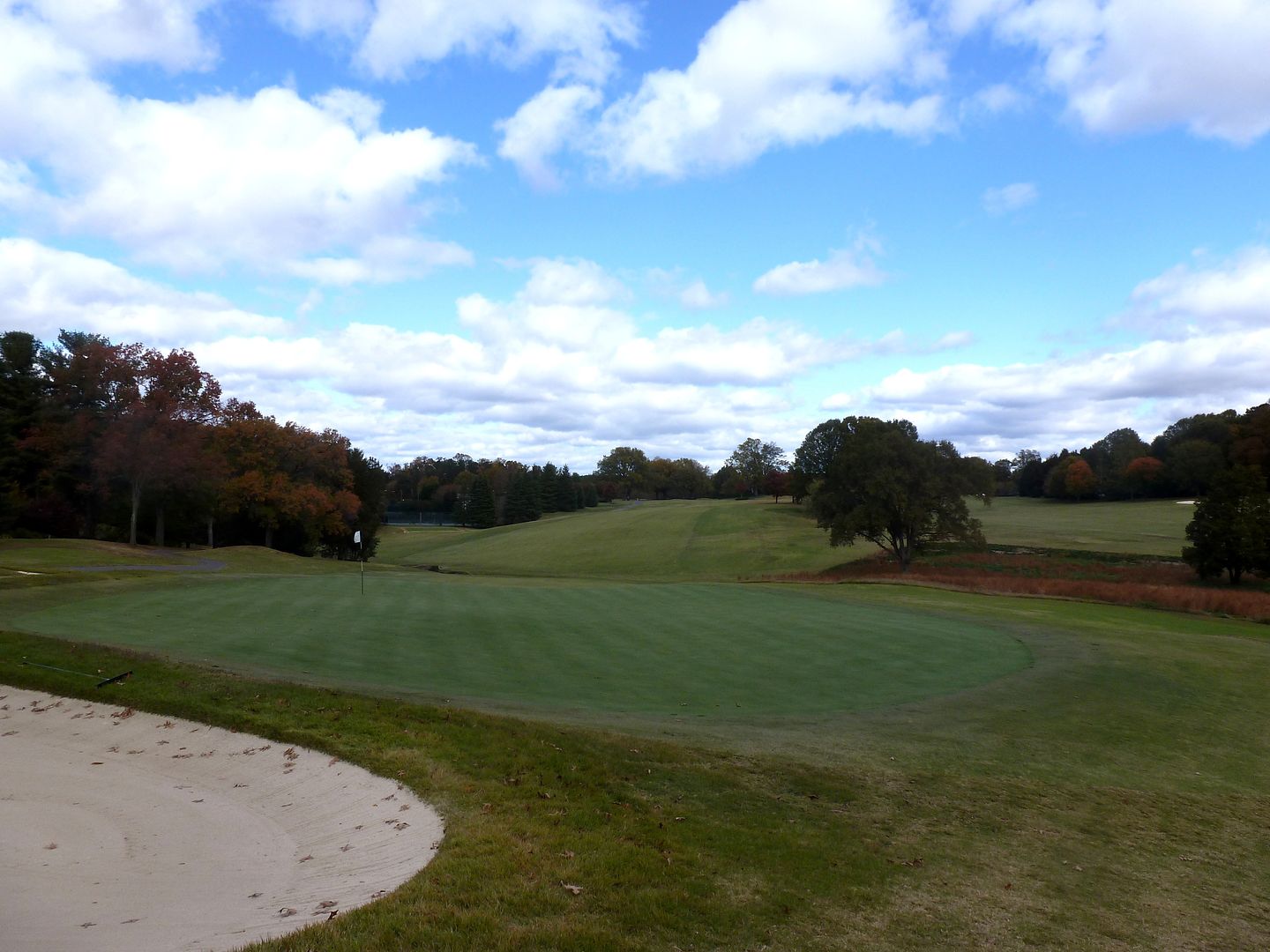
As is a Maxwell trademark, the first is situated just steps from the clubhouse on a high piece of property to a fairway down below. The single fairway bunker on the right serves as an aiming marker, though it is impossible to know this on one's first play. What appears to be the ideal line down the left will leave the golfer in the rough for his approach.
Tee View:

Approach View:

The first of many great greens at OTC. The green flows with the land, sloping severely from right-to-left. A false-front and deep drop-off left make this a difficult target to find from the approach, which is played from a downhill lie to an uphill green.


Greensite as seen from 3 fairway:

1 from 2nd Tee:

Hole 2: Par 3, 163 Yards
The 2nd is a short, downhill par-3, but given that the prevailing wind plays across the hole, and the green lays at a diagonal to the tee, a perfect matching of line and distance must be achieved to find this green.
My [very generous] host pointed out that this hole is based on the design of one of the holes at Augusta National. I can't recall which one it is, but based on the layout of the bunkers, I'm guessing it is the 7th.
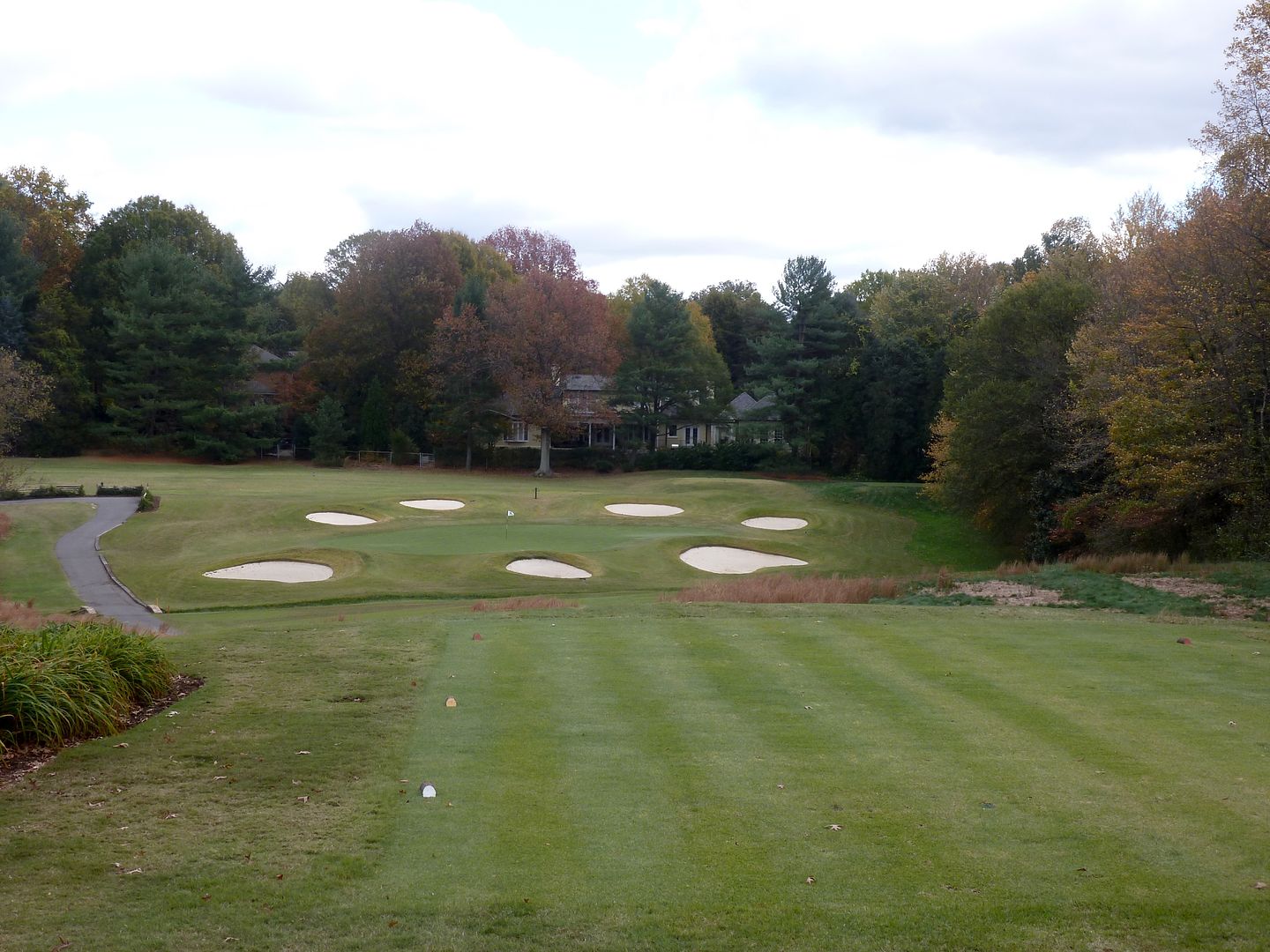
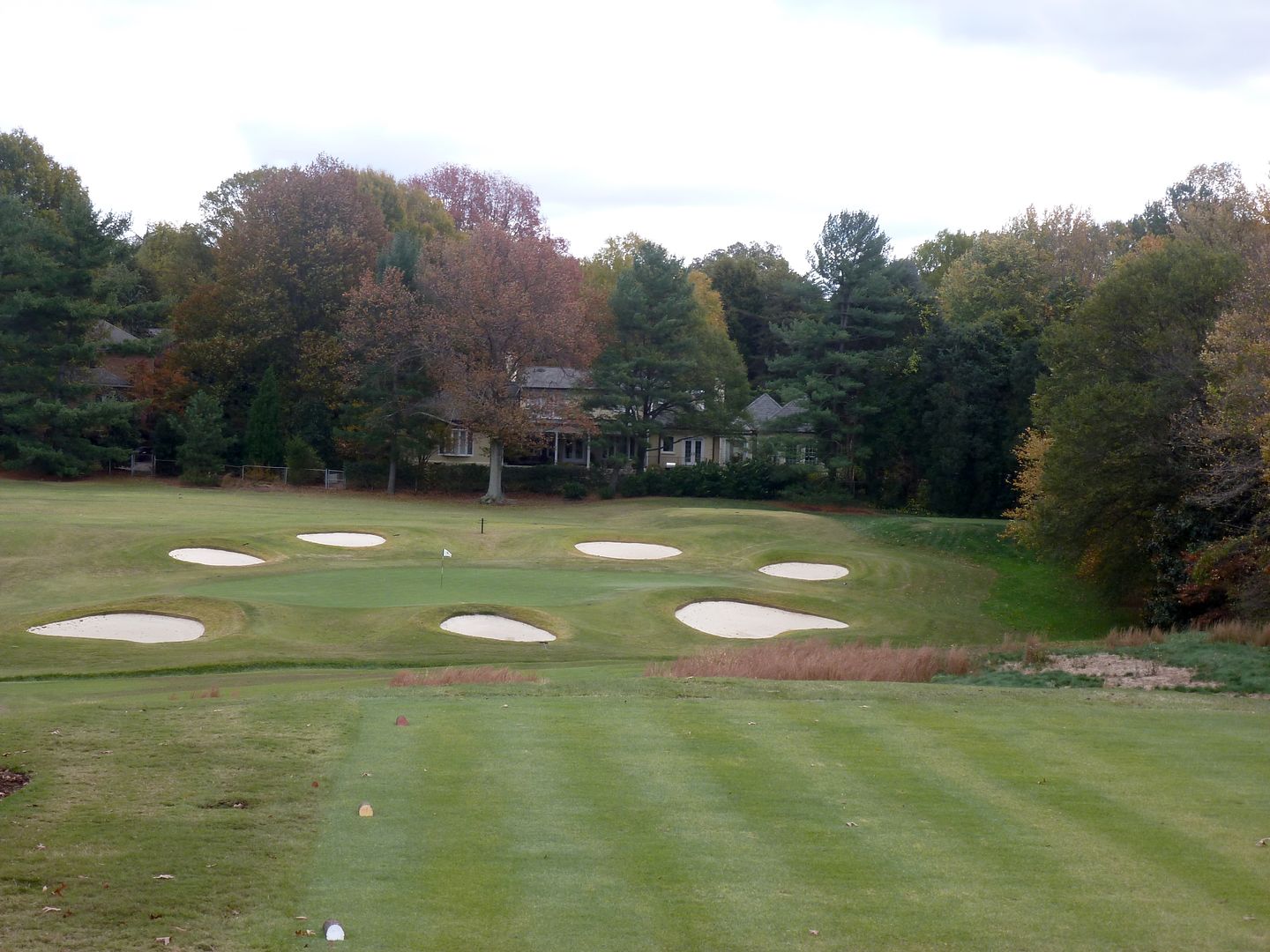
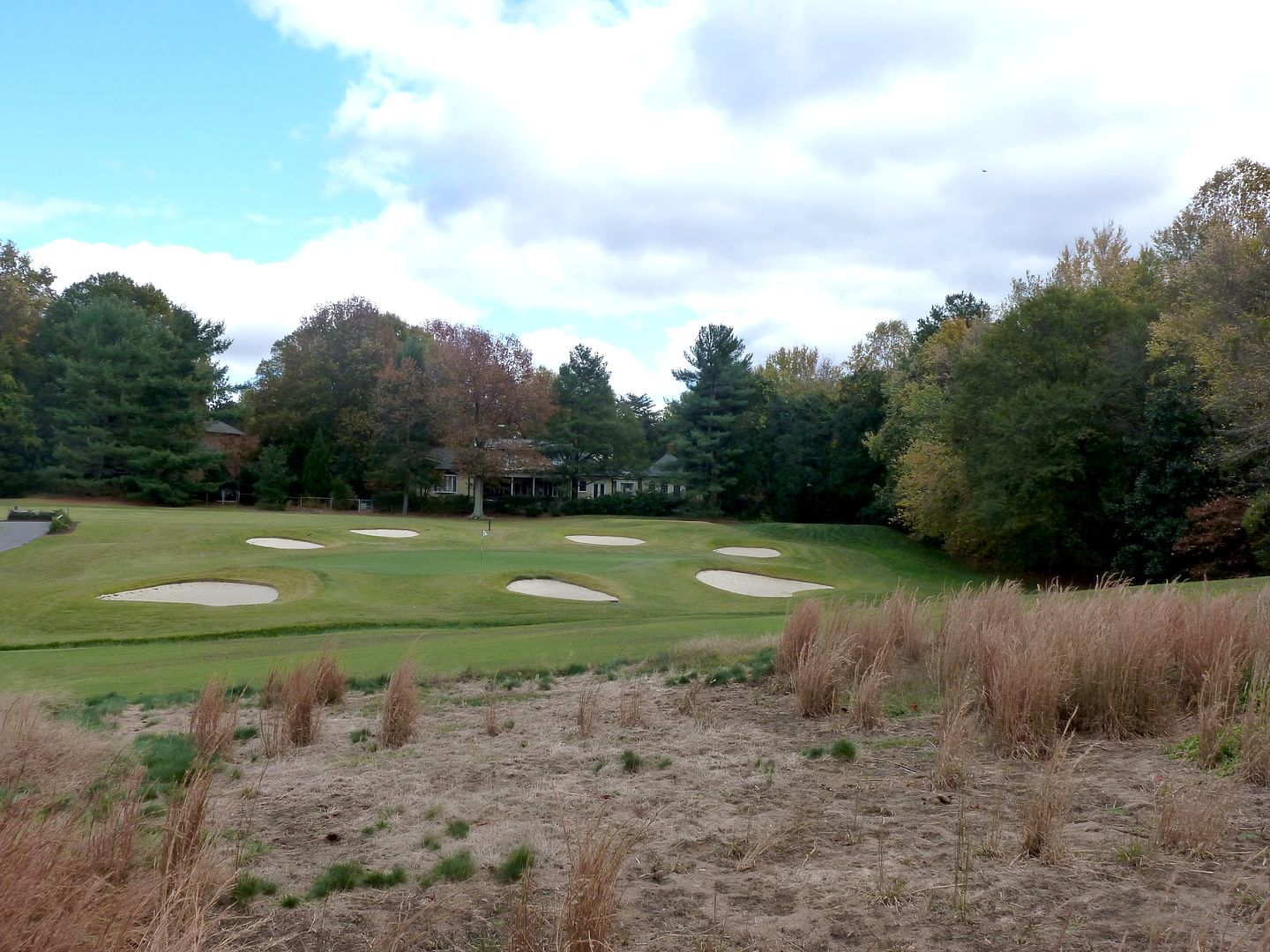
The green is heavily contoured and is split into three sections, left, centre and right, by two ridges that run diagonally across the green.
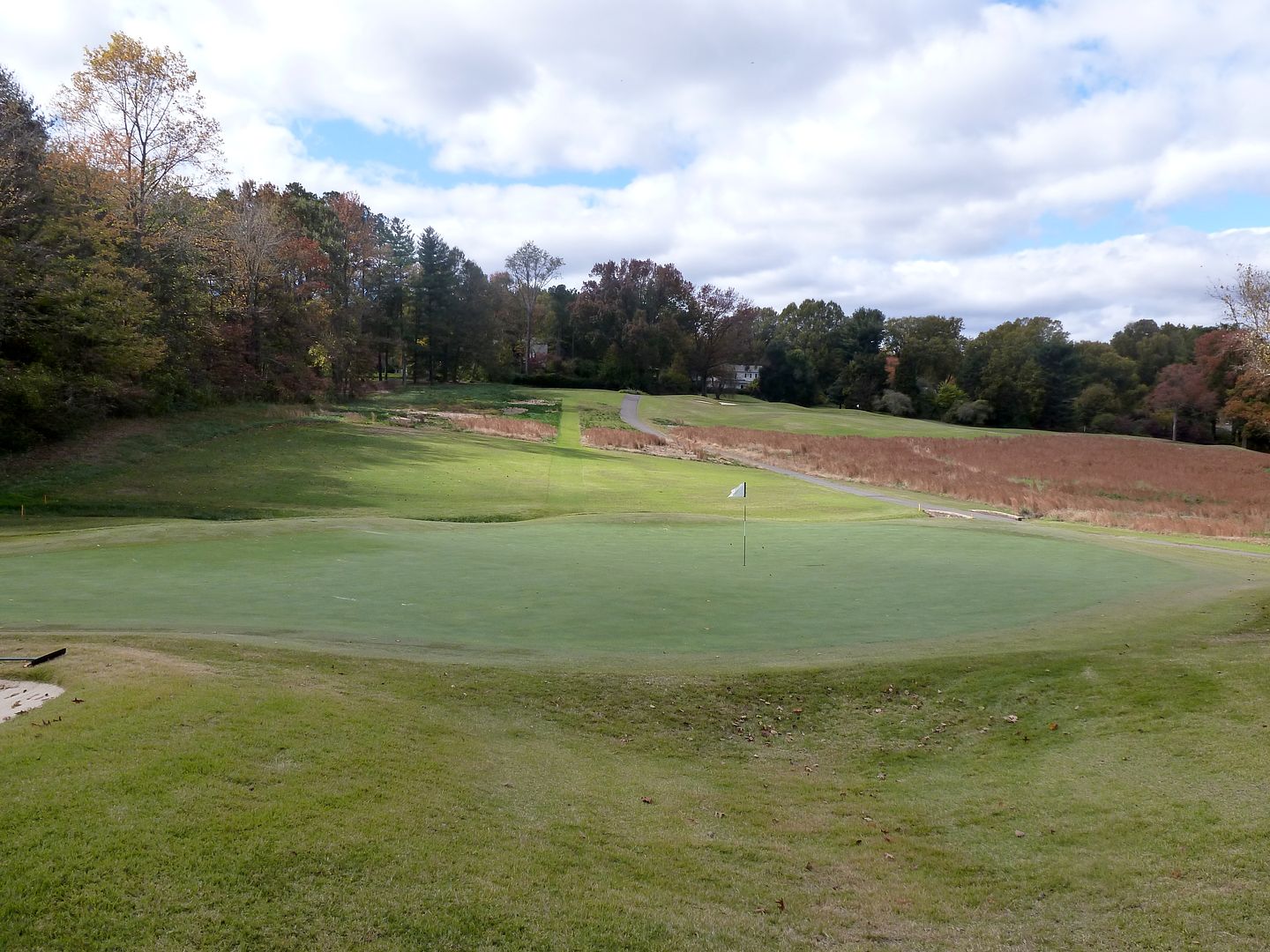
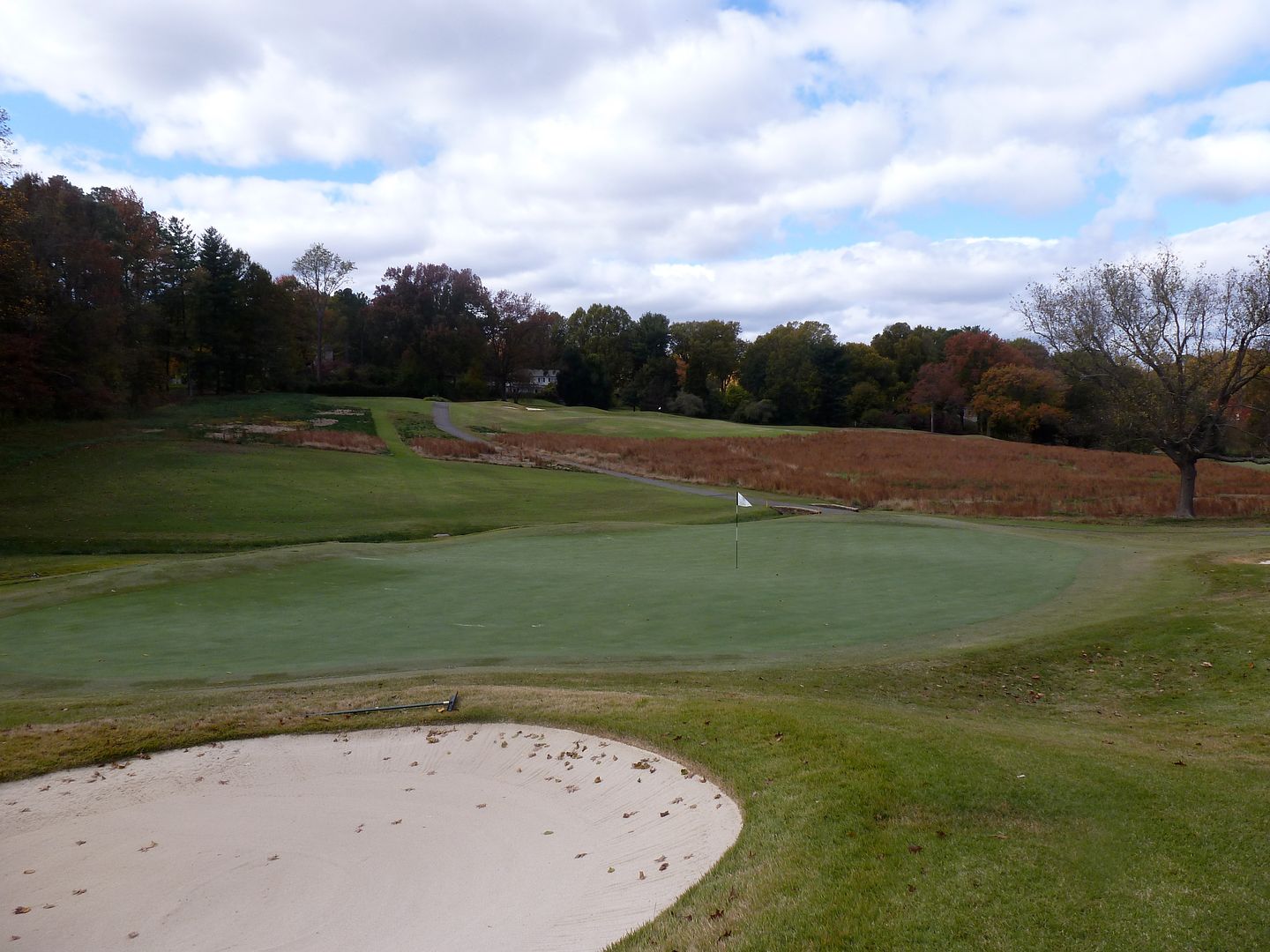

The 2nd is a short, downhill par-3, but given that the prevailing wind plays across the hole, and the green lays at a diagonal to the tee, a perfect matching of line and distance must be achieved to find this green.
My [very generous] host pointed out that this hole is based on the design of one of the holes at Augusta National. I can't recall which one it is, but based on the layout of the bunkers, I'm guessing it is the 7th.



The green is heavily contoured and is split into three sections, left, centre and right, by two ridges that run diagonally across the green.



Hole 5: Par 4, 380 Yards
A wonderful short par-4 over some more dramatic land at Old Town Club. A sharp dogleg left with two bunkers guarding the inside of the dogleg... it's about 230 over them. The fairway contouring is very clever, as the entire fairway is designed to accept and slow tee balls and keep them in the fairway, but once the rough line is reached, the land slopes away sending the ball a long way off-line.
Tee View:
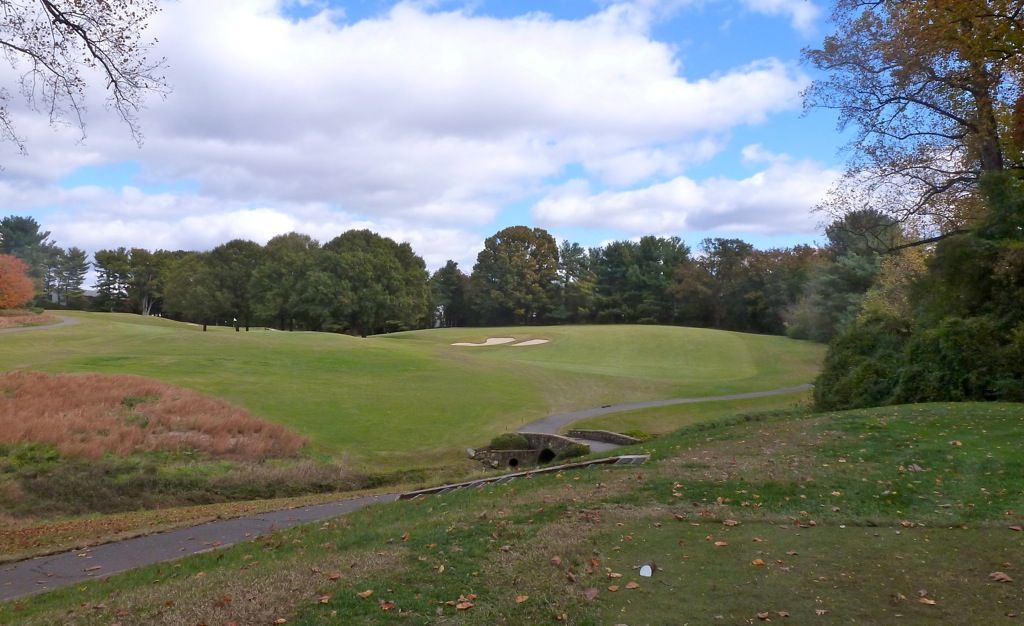
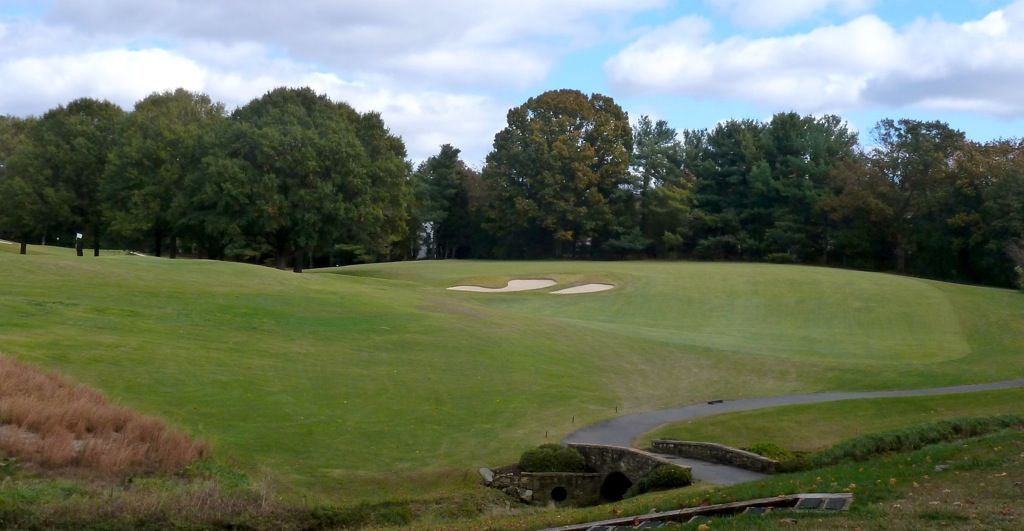
While most of the fairway cants right-to-left, the area short of the green and the green site slopes significantly the other way... not surprisingly, the green fits perfectly with the lay of the land, sloping severely from left to right.
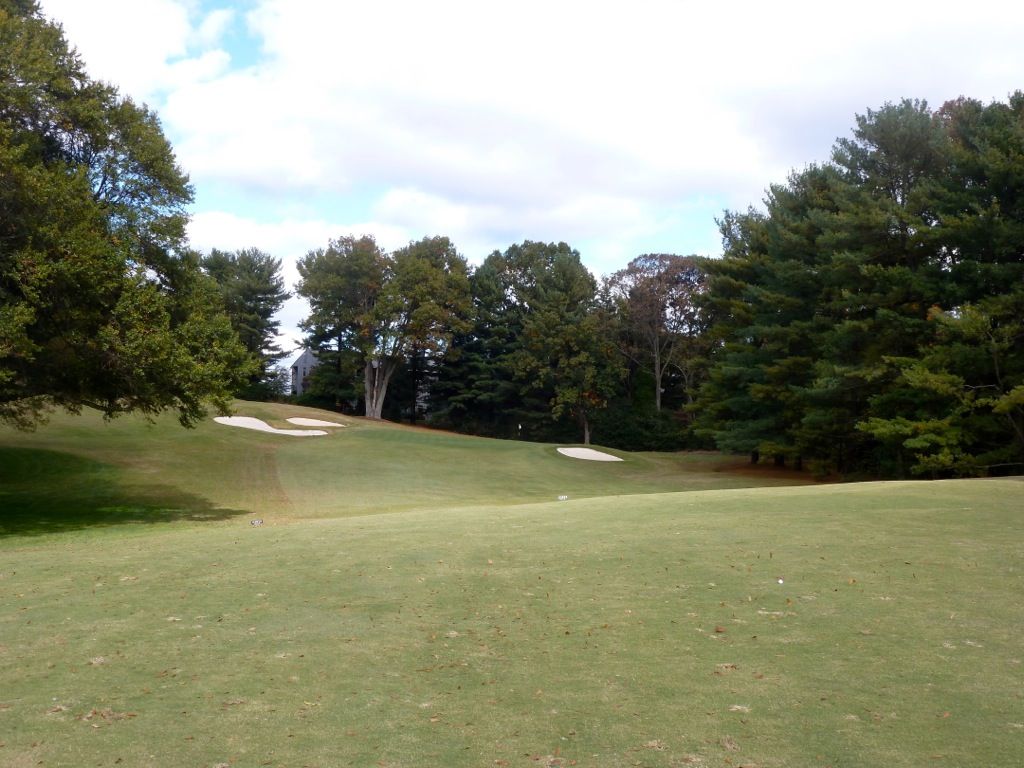

Shots can be played to the left side of the green to feed down to the right. Anything near the front-left portion of the green will feed back, off of the green. Subtle tiering makes it feel like there are three greens in one here.
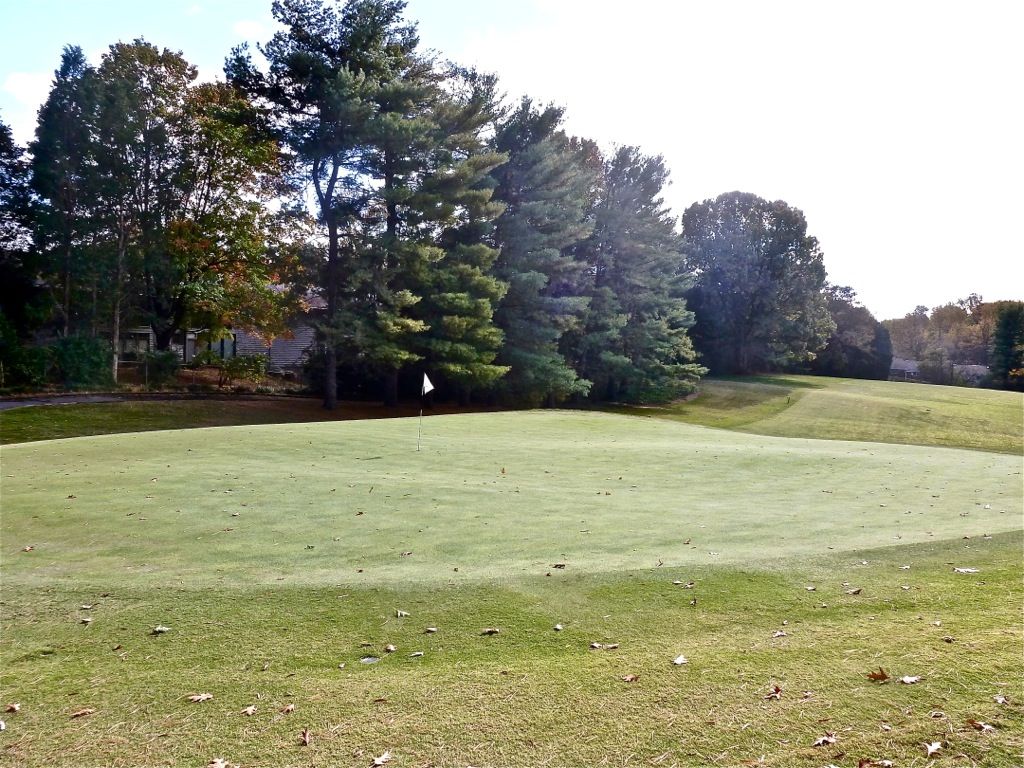
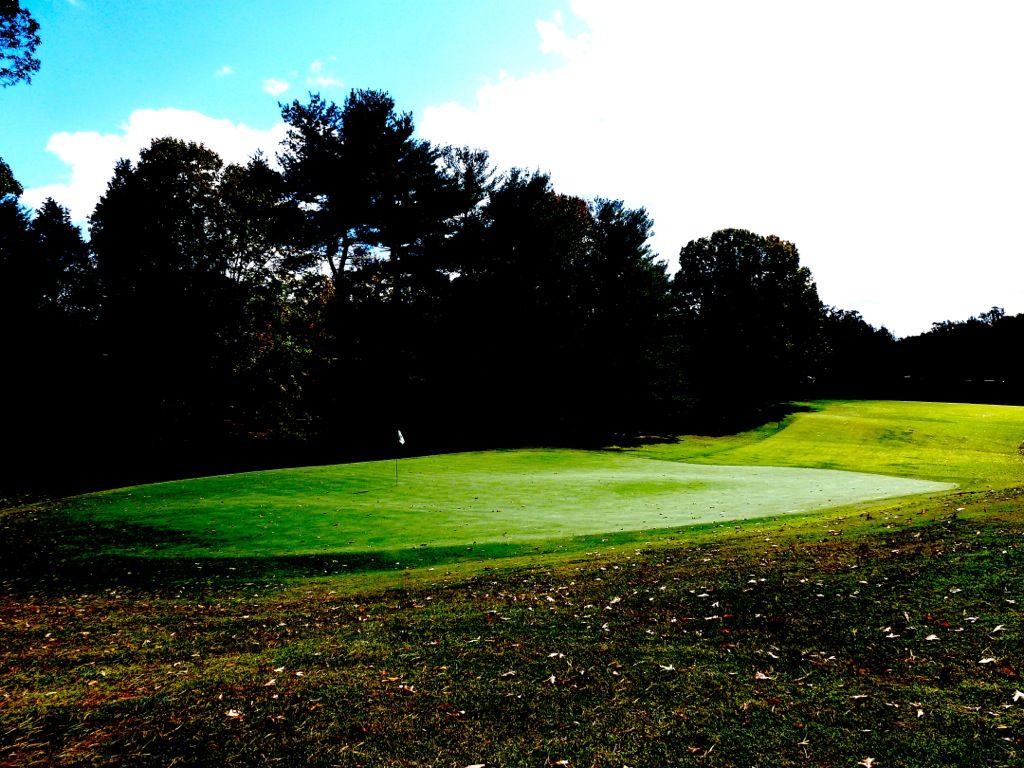
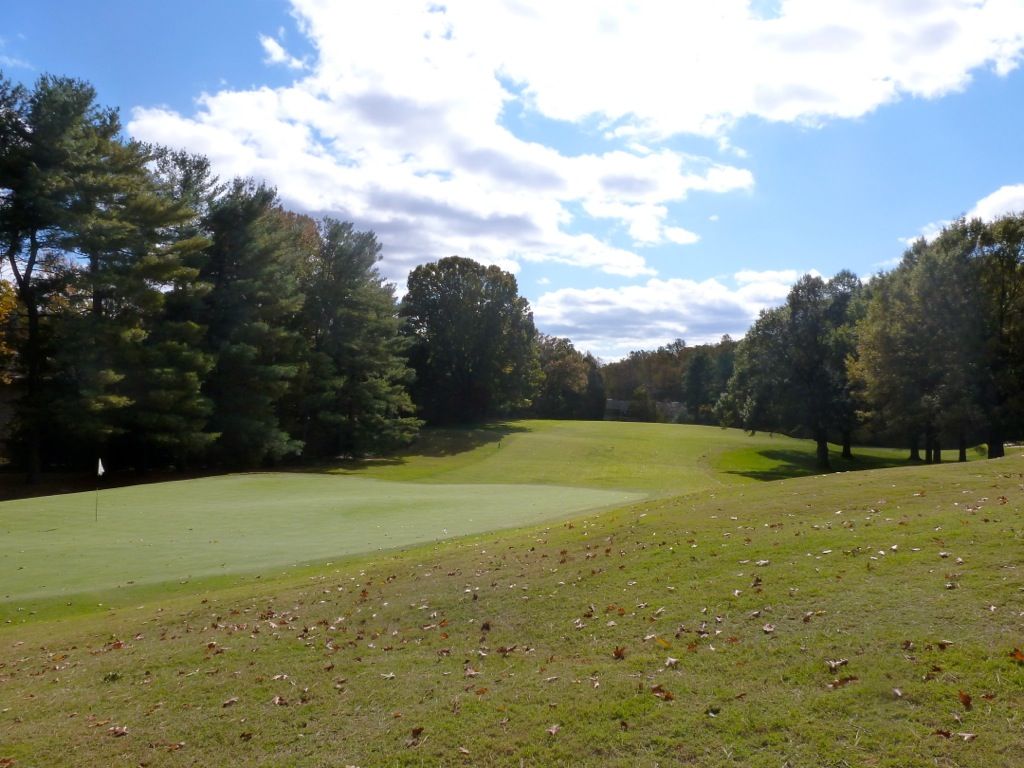
Hole 6: Par 3, 185 Yards
What looks like a simple par-3 is really a masterpiece. Yes, it's just a downhill mid-iron to a green open in front, but with the removal of trees behind the green, depth perception is nearly impossible. The only containment is the bunkering in the left side of the green, but drop-offs long-left, long and right make shots that miss this green very difficult to recover from.
Tee View:
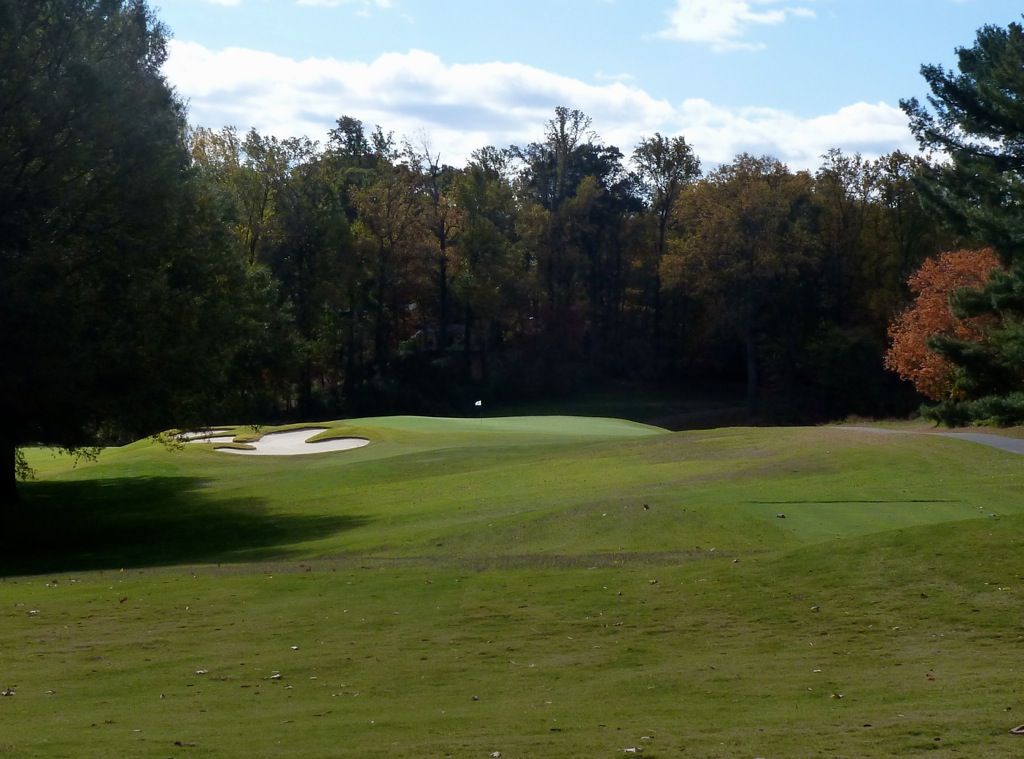
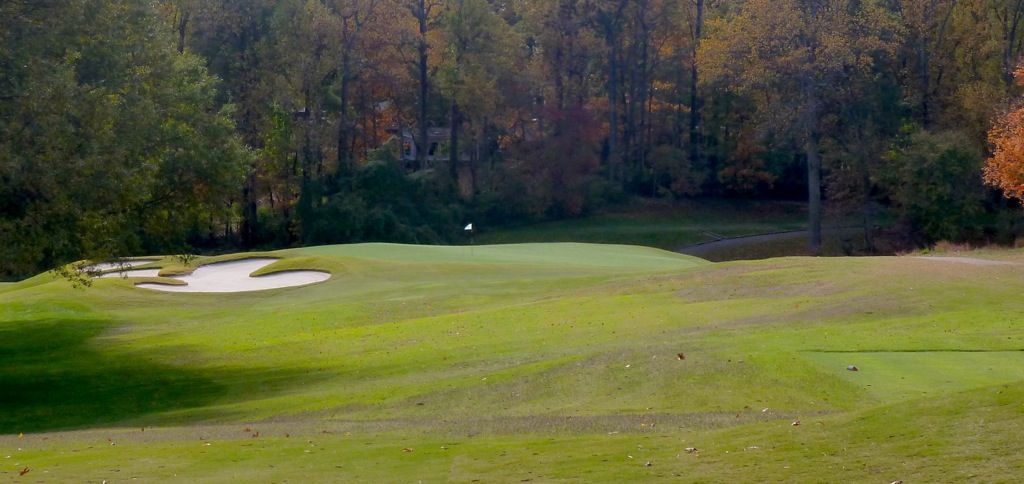
Though the pictures fail to capture the movement on the 6th green, it is spectacular. Anyone that plays the 5th and 6th at Old Town must wonder if this is the best duo of back-to-back greens in the country!

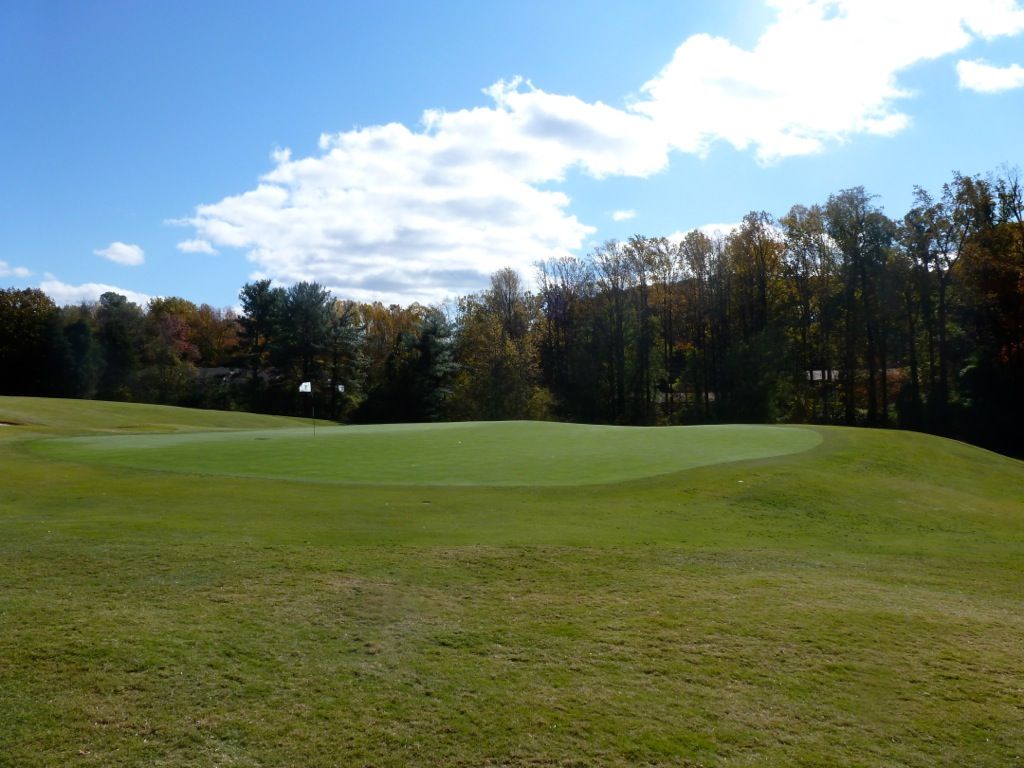
6th as seen from the left from the 5th fairway:
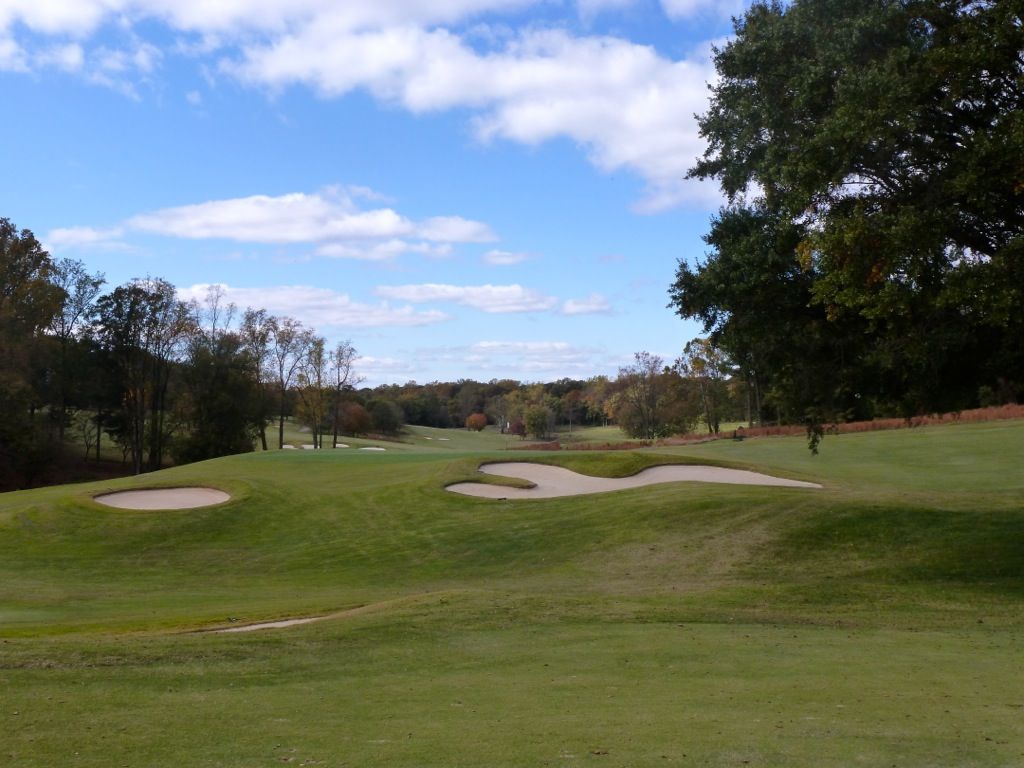
A wonderful short par-4 over some more dramatic land at Old Town Club. A sharp dogleg left with two bunkers guarding the inside of the dogleg... it's about 230 over them. The fairway contouring is very clever, as the entire fairway is designed to accept and slow tee balls and keep them in the fairway, but once the rough line is reached, the land slopes away sending the ball a long way off-line.
Tee View:


While most of the fairway cants right-to-left, the area short of the green and the green site slopes significantly the other way... not surprisingly, the green fits perfectly with the lay of the land, sloping severely from left to right.


Shots can be played to the left side of the green to feed down to the right. Anything near the front-left portion of the green will feed back, off of the green. Subtle tiering makes it feel like there are three greens in one here.



Hole 6: Par 3, 185 Yards
What looks like a simple par-3 is really a masterpiece. Yes, it's just a downhill mid-iron to a green open in front, but with the removal of trees behind the green, depth perception is nearly impossible. The only containment is the bunkering in the left side of the green, but drop-offs long-left, long and right make shots that miss this green very difficult to recover from.
Tee View:


Though the pictures fail to capture the movement on the 6th green, it is spectacular. Anyone that plays the 5th and 6th at Old Town must wonder if this is the best duo of back-to-back greens in the country!


6th as seen from the left from the 5th fairway:

Hole 7: Par 4, 419 Yards

The tee shot has an extremely open feeling, as the 7th fairway shares a fairway with the 16th.
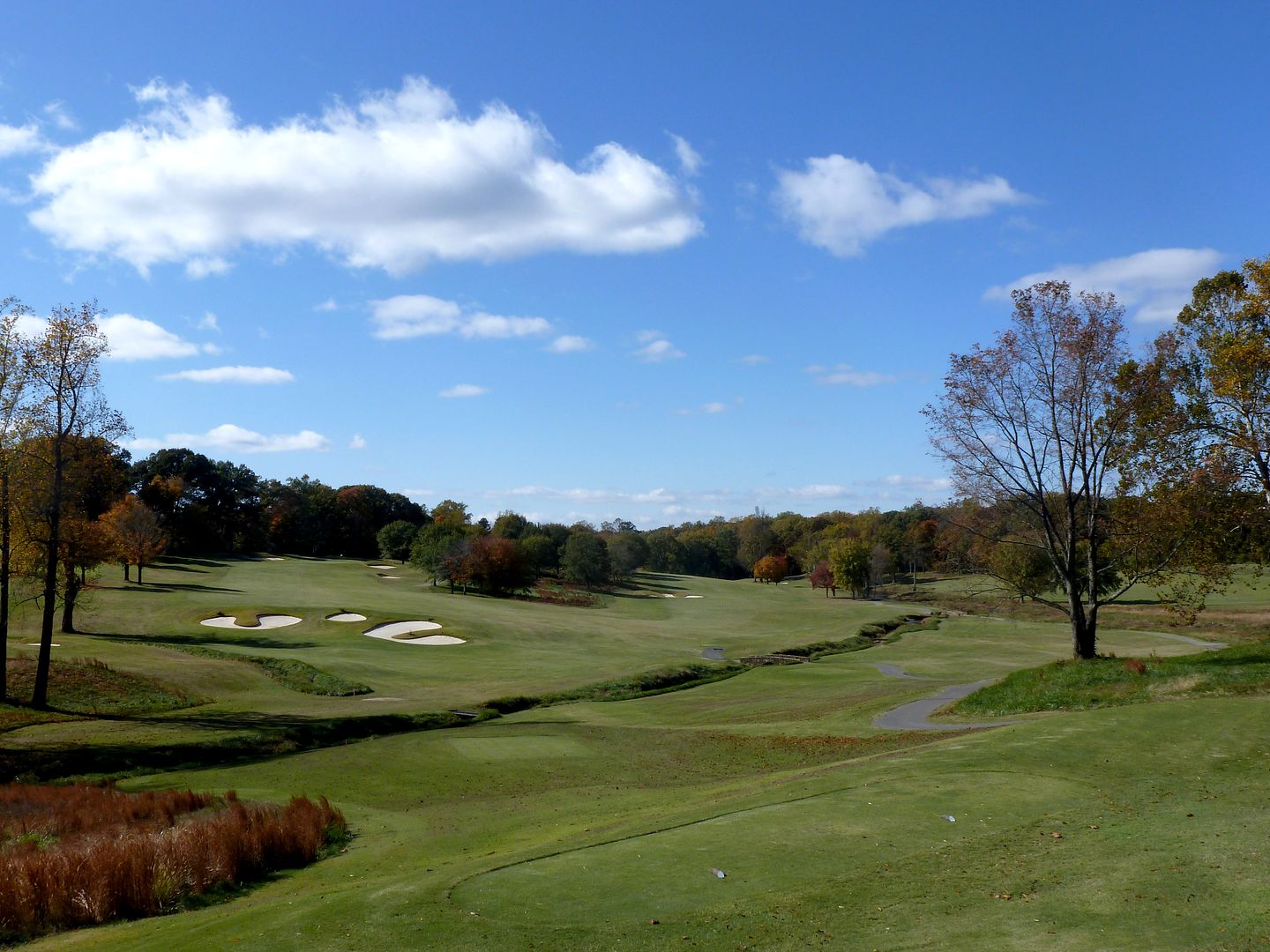
But, the golfer really wants to play his tee shot up the left side of the fairway, over the series of uniquely shaped bunkers.
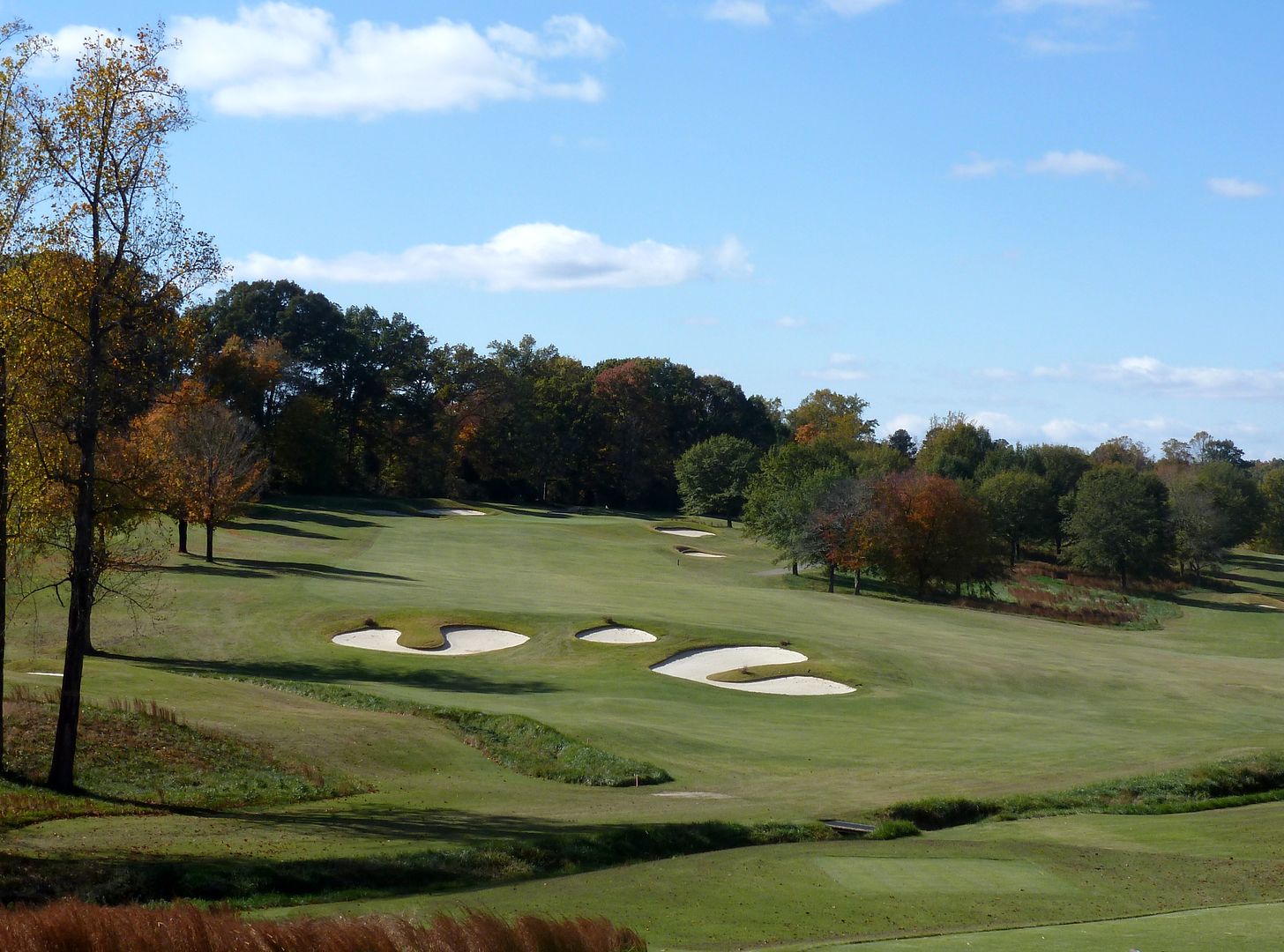
The approach is best played from the left. Not an easy task as the fairway slopes significantly from left-to-right:
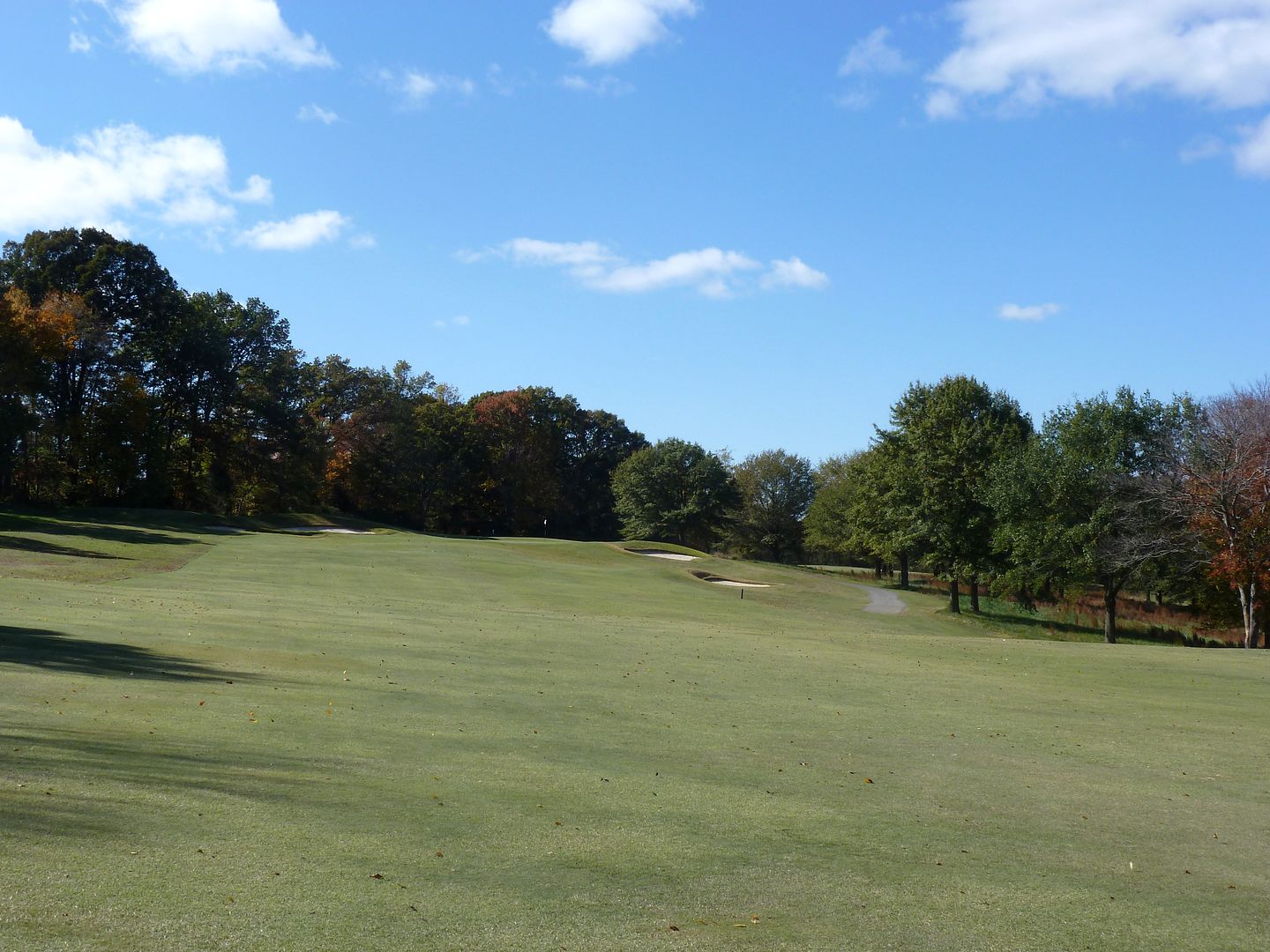
Not only is the green extremely small given the difficulty of this uphill, into the wind approach on a fairly long hole, but it is also guarded by a couple of very deep bunkers and a significant false-front:
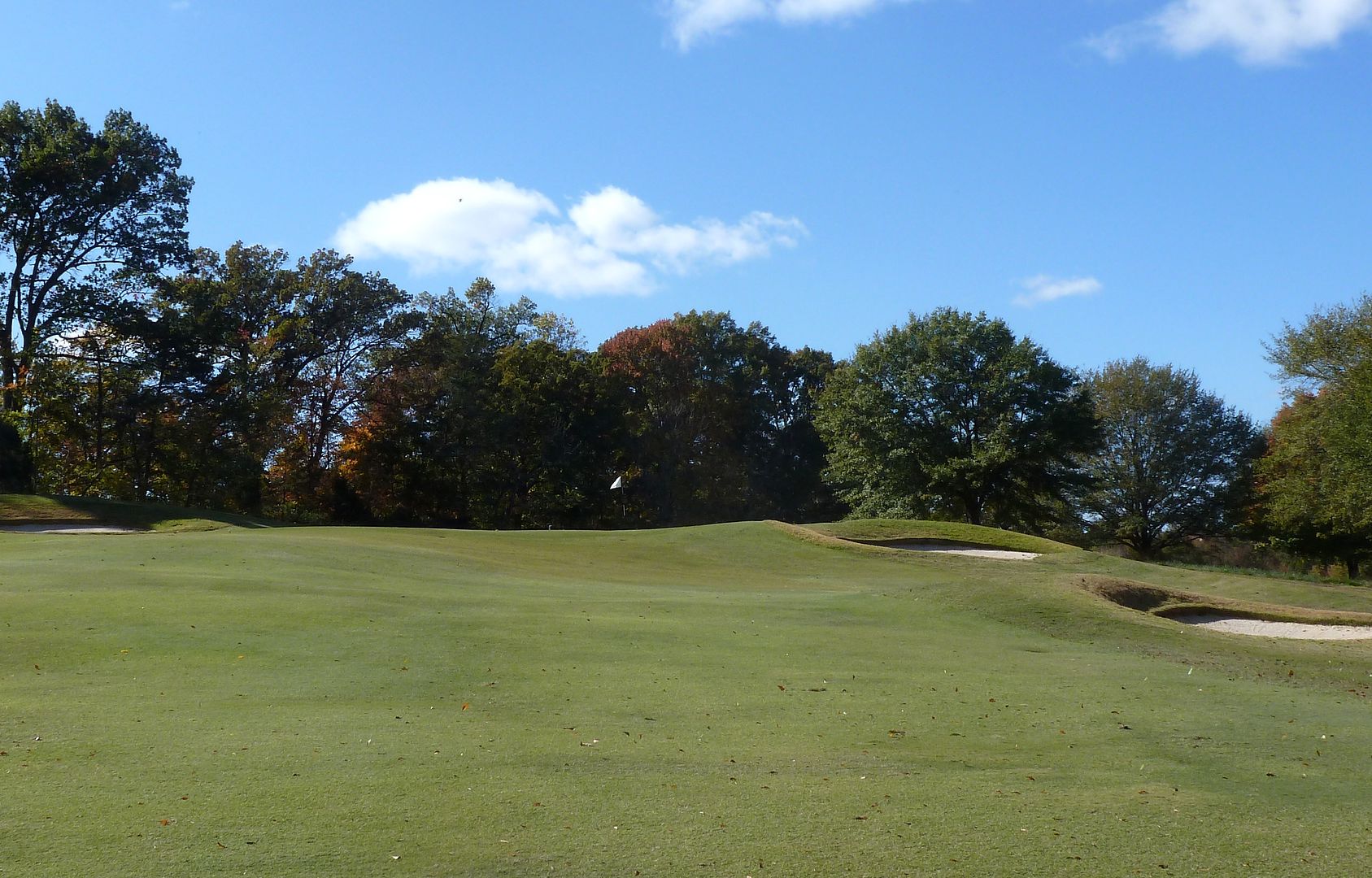
The green lays at a 45-degree angle to the fairway and slopes from left-to-right. Not an easy task to find this green. Not an easy task to two-putt once on the green.
Green from behind:

Green from left:
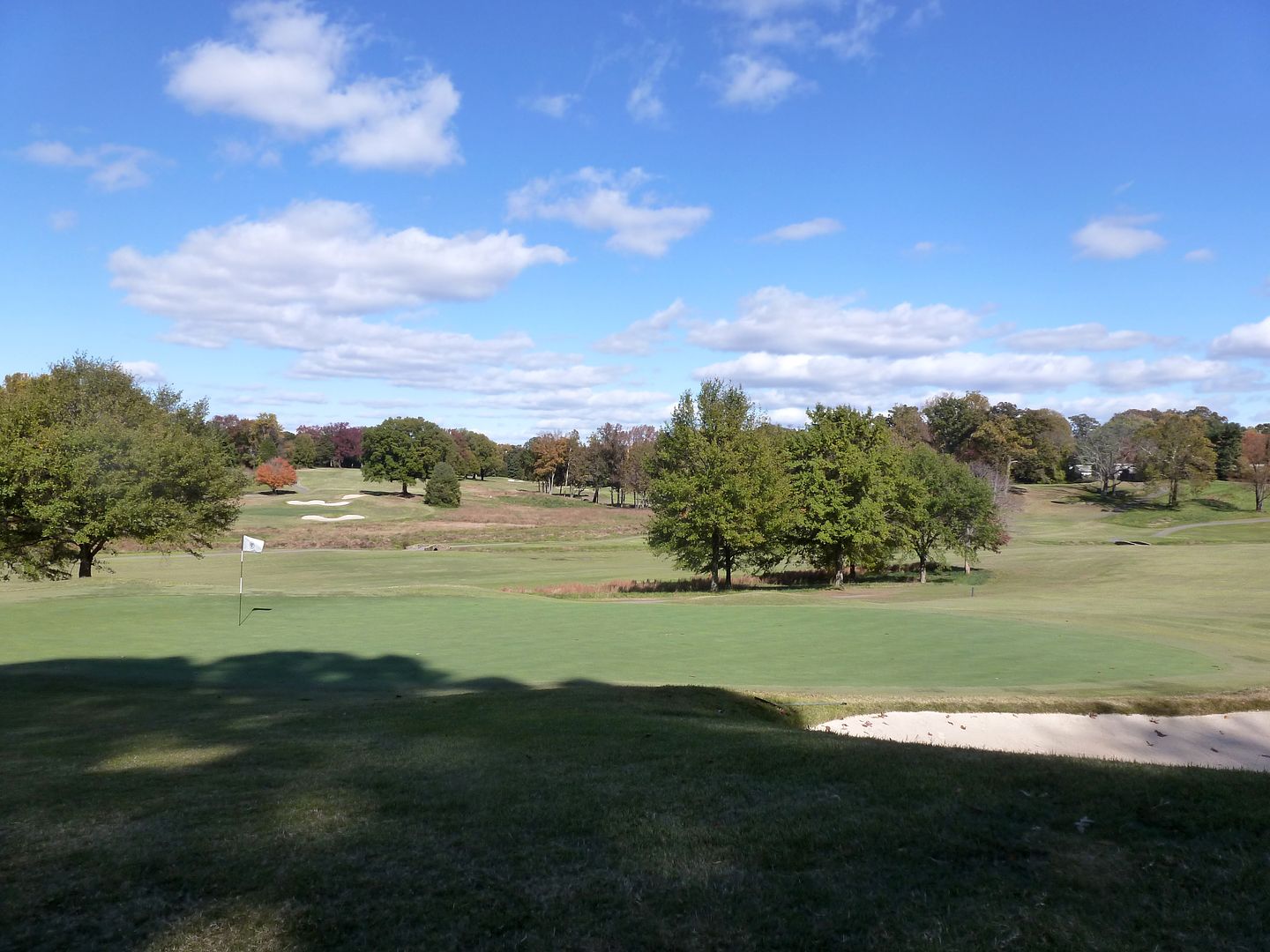
Hole 11: Par 3, 210 Yards
Though maybe not the most interesting hole on the golf course, it is probably the prettiest. The same creek that wound in front of the 8th green once again comes into play, guarding the entire right-side of the hole.


A single bunker left protects against a bail-out...
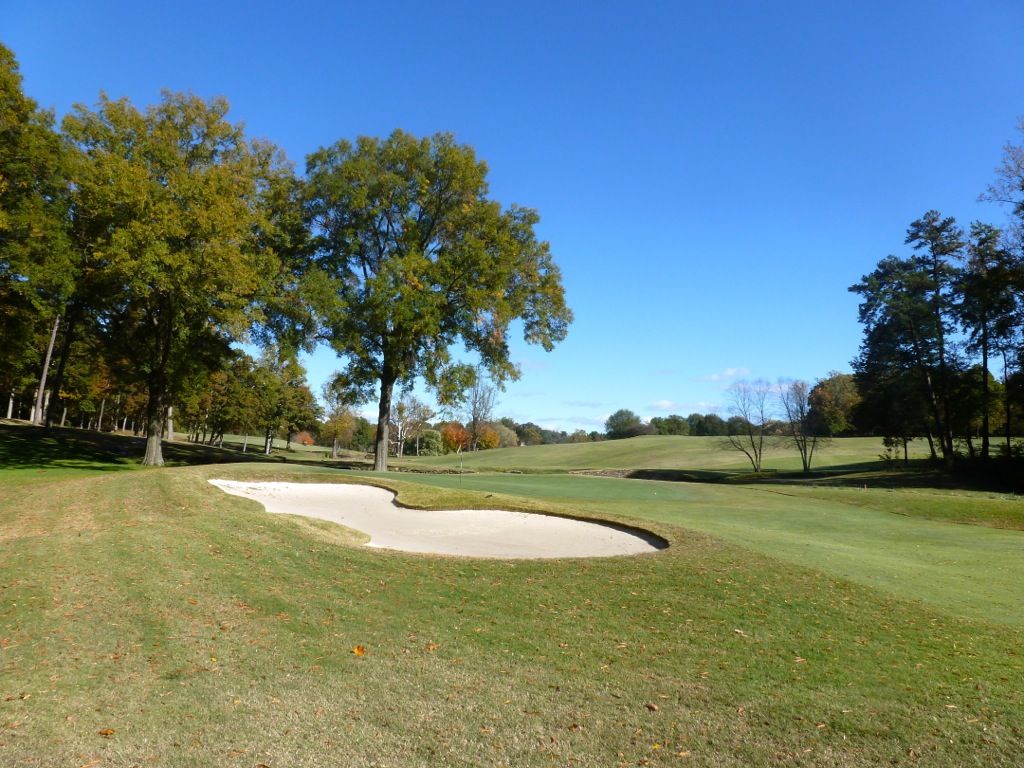
And the green is one of the tamest on the course, with a tier on the left portion of the green and a feeder slope that allows clever golfers to get near a right-hand pin without challenging the water.
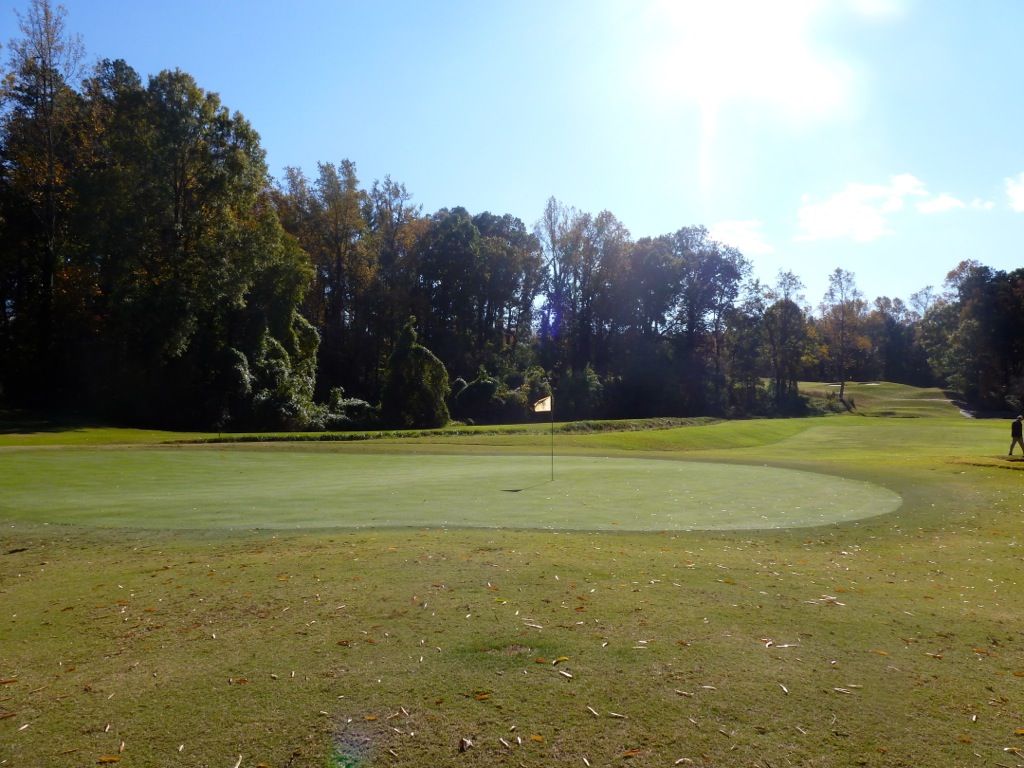
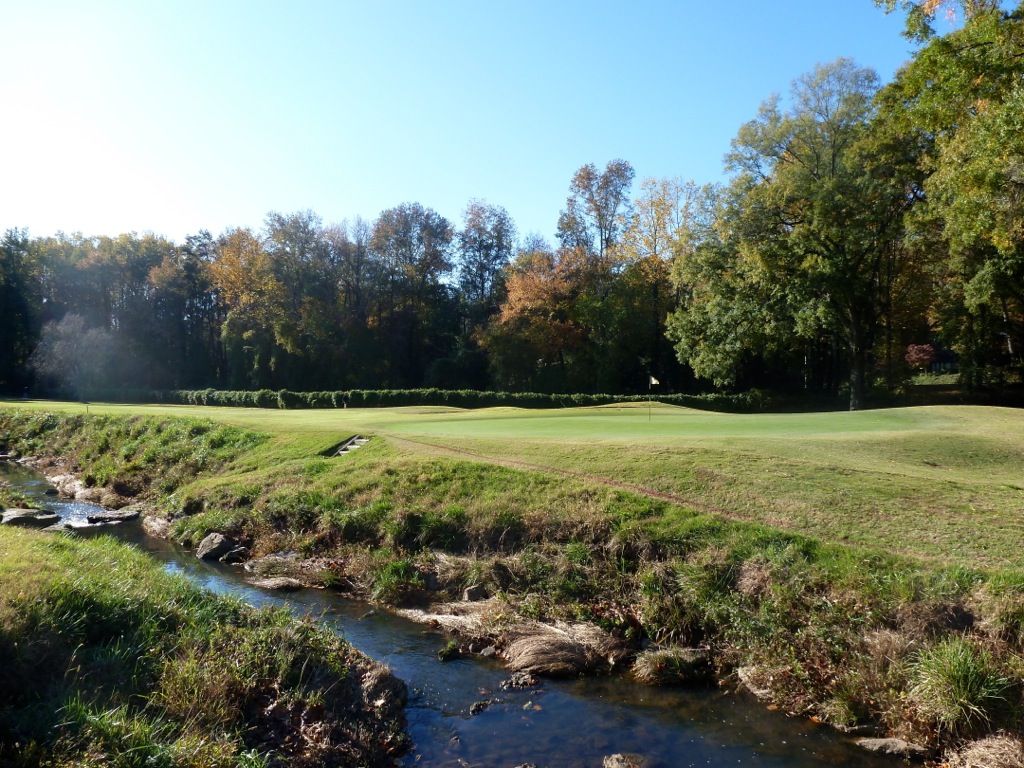
Hole 12: Par 4, 430 Yards
One of my favourite holes on the golf course. The green is straightaway but blind from view from the tee. The golfer is rewarded if he can keep his tee ball down the left side of this severely left-to-right sloping fairway. Balls that end-up on the right portion of the fairway will leave a completely blind approach to the green.
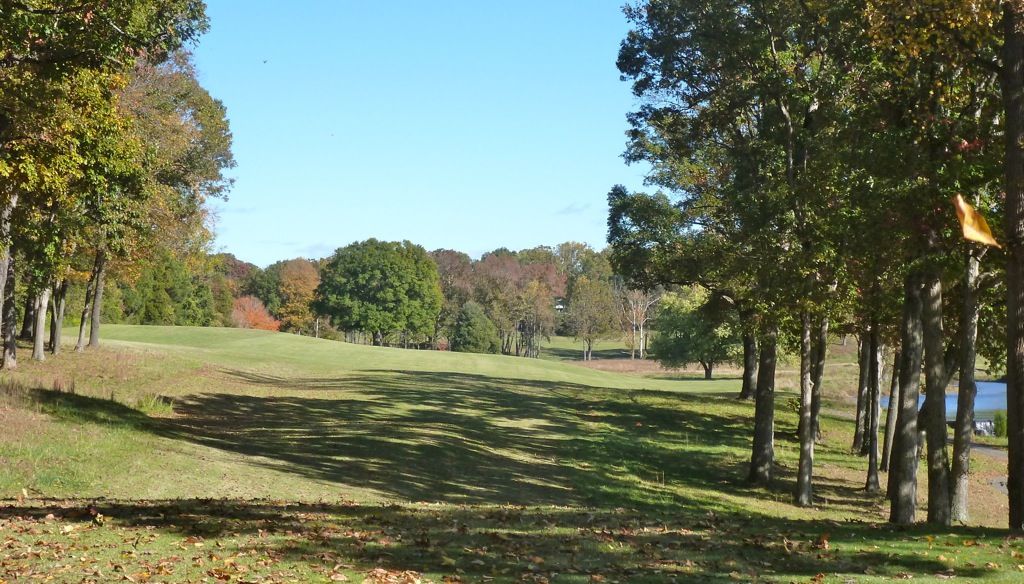
From the left portion of the fairway, depending on the length of the tee shot, at least some of the green may be in view. Once again, the green lay at an angle to the fairway, making this approach from a severely sloping lie a very difficult.
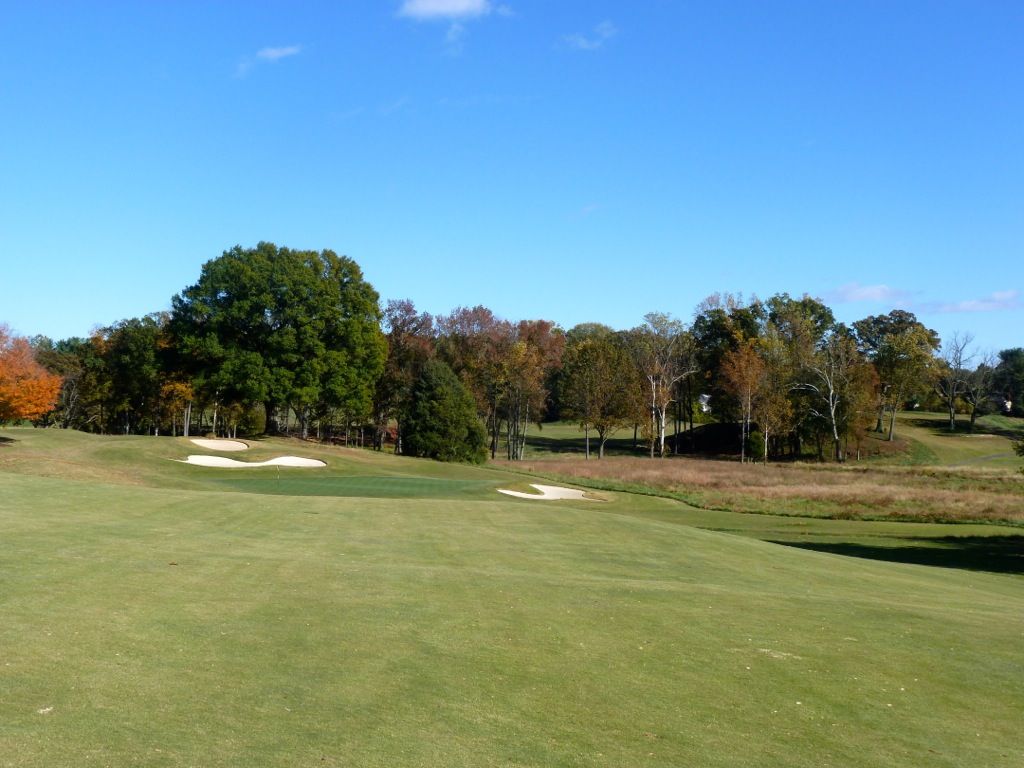
What cannot be seen from the fairway is the creek (yep, same creek) that has run down the right side of the hole and crosses the fairway 15 yards short of the green.
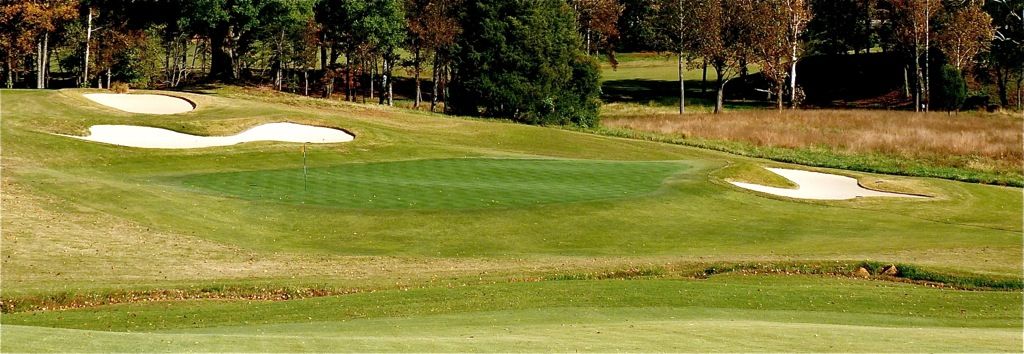
As contoured as any green at Old Town, the 12th green is a great of example of the Maxwell Rolls:
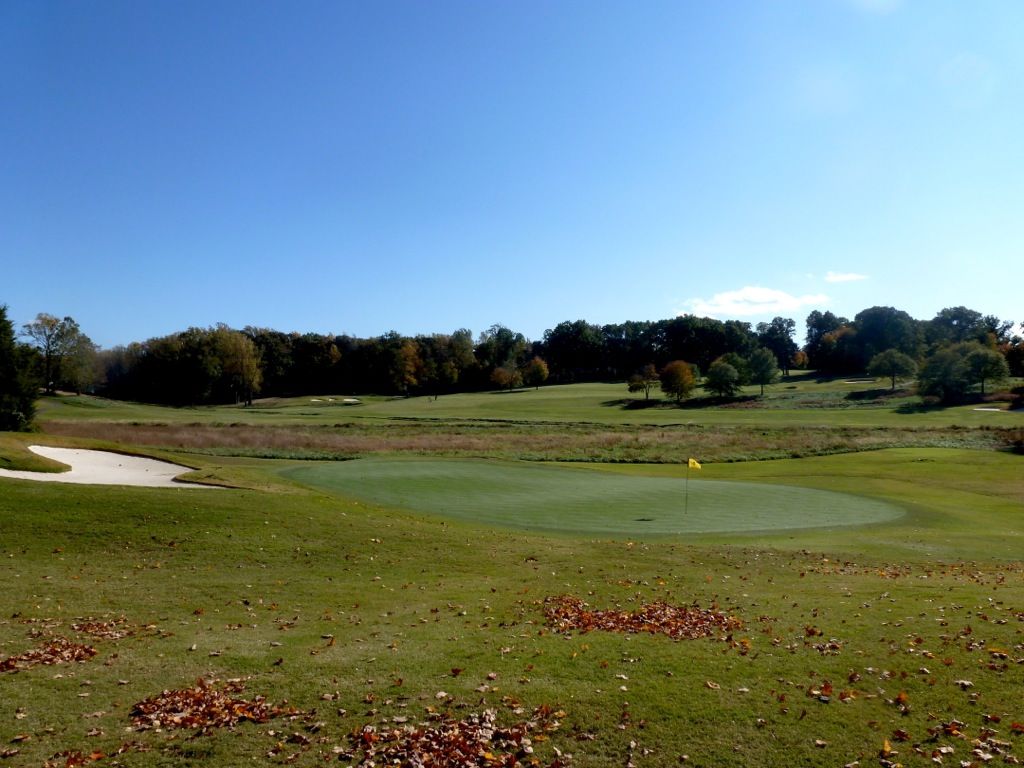
Hole 15: Par 3, 230 Yards
A very difficult par-3 with a creek (same creek) running down the entire left side of the hole. The green extends farther left than one can see (or imagine) from the tee. Shots can be run onto the right portion of the green, and a shot with a little leftward spin could use the green contours to find the left side of the green. It wouldn't be so far a stretch to say Bill Coore got the idea for his now template green as seen at 8 at Sand Hills from this green.
Tee View:
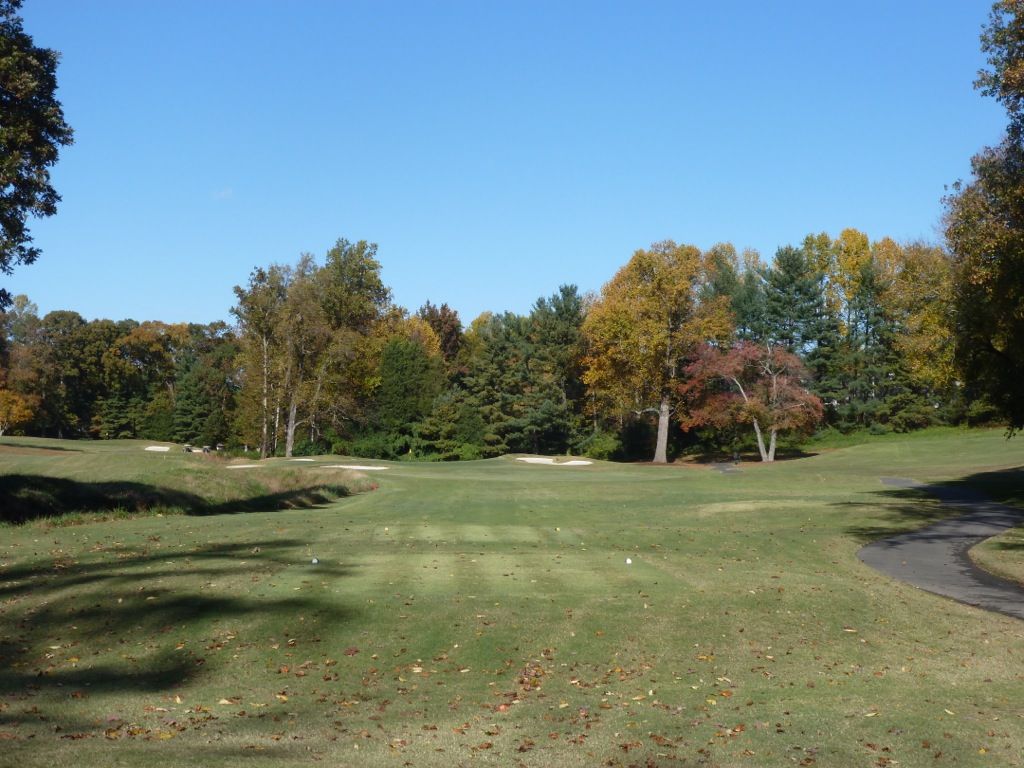
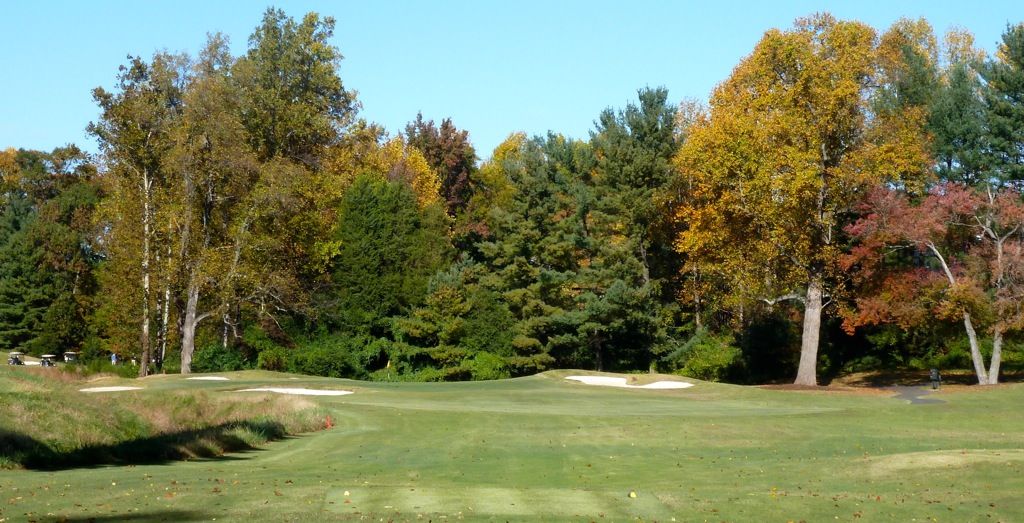
Green from right:

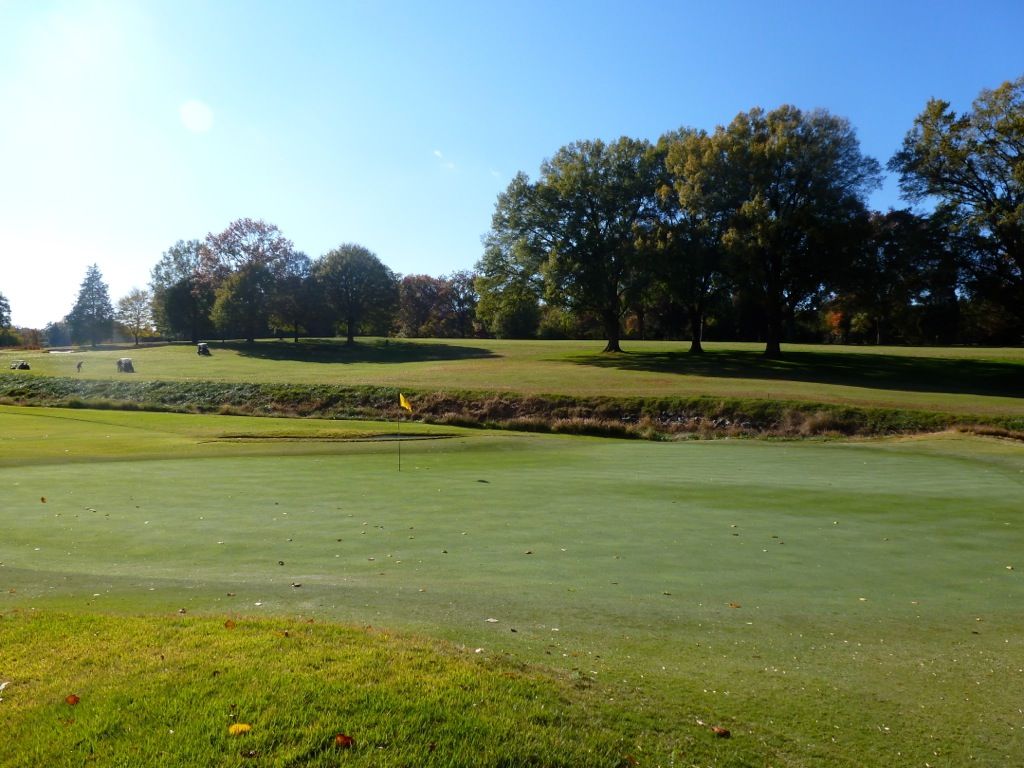
When on the 14th fairway, one gets a clear look at both the shape and contouring of the wild 15th green. A clever routing trick by Maxwell, allowing the golfer to preview the shot. Note the boomerang shape of the green.
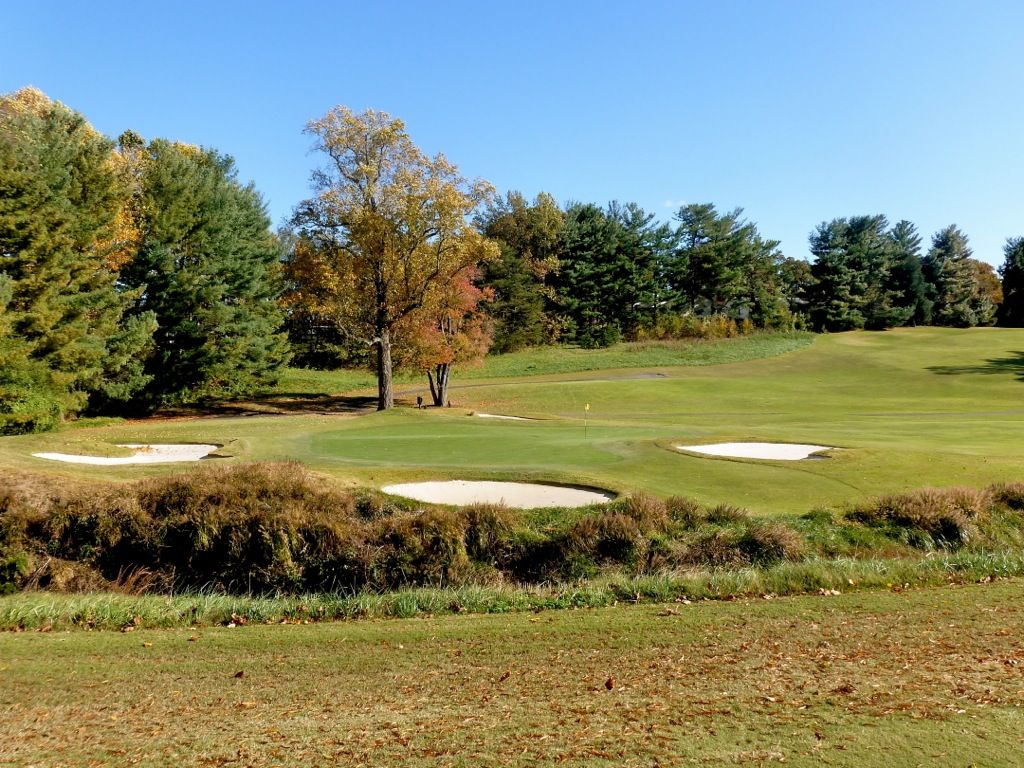
Hole 17: Par 5, 590 Yards
A diagonal forced carry over a creek (same creek) with the longer carry protecting the shortest line into the green. Unless the hole plays into the wind, carrying the entirety of the creek will not be a problem for many.
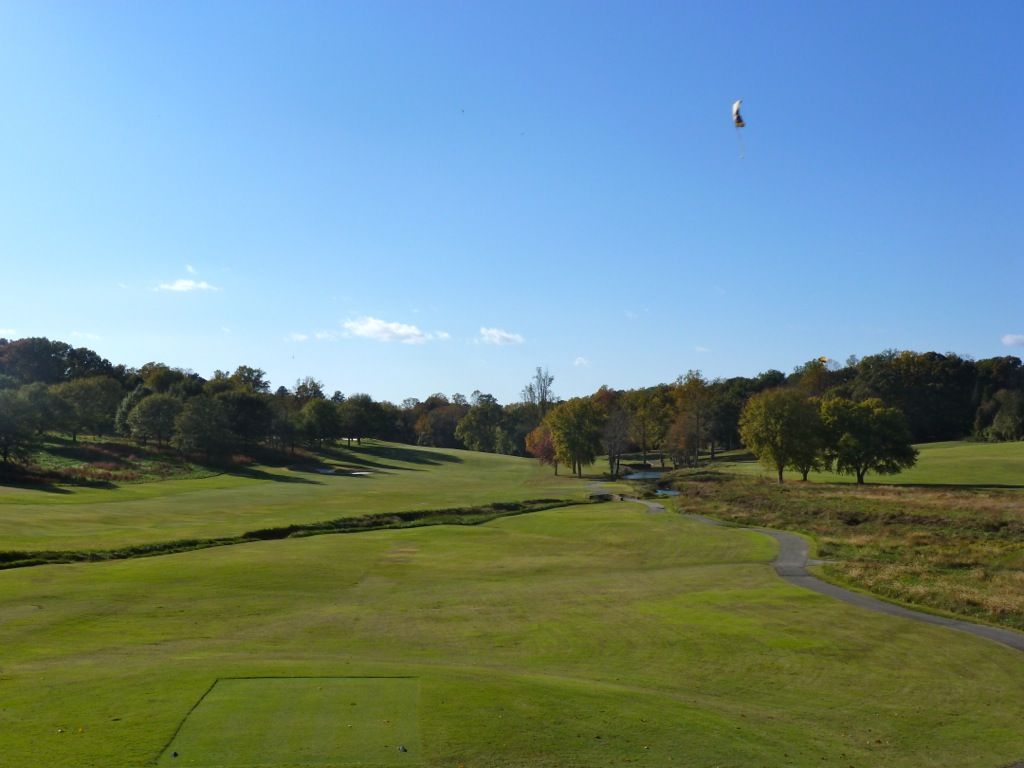
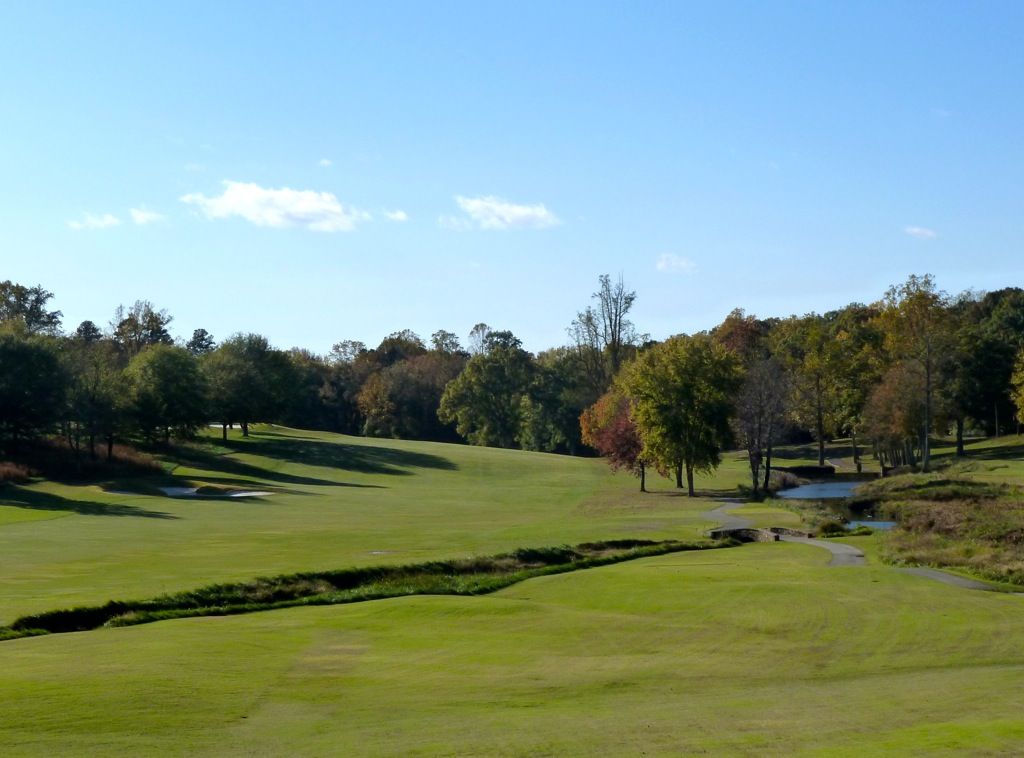
The second shot is blind played over the crest of a hill. Shots must get within 150 yards of this double-green or the golfer will face a completely blind approach.
Approach from ~150
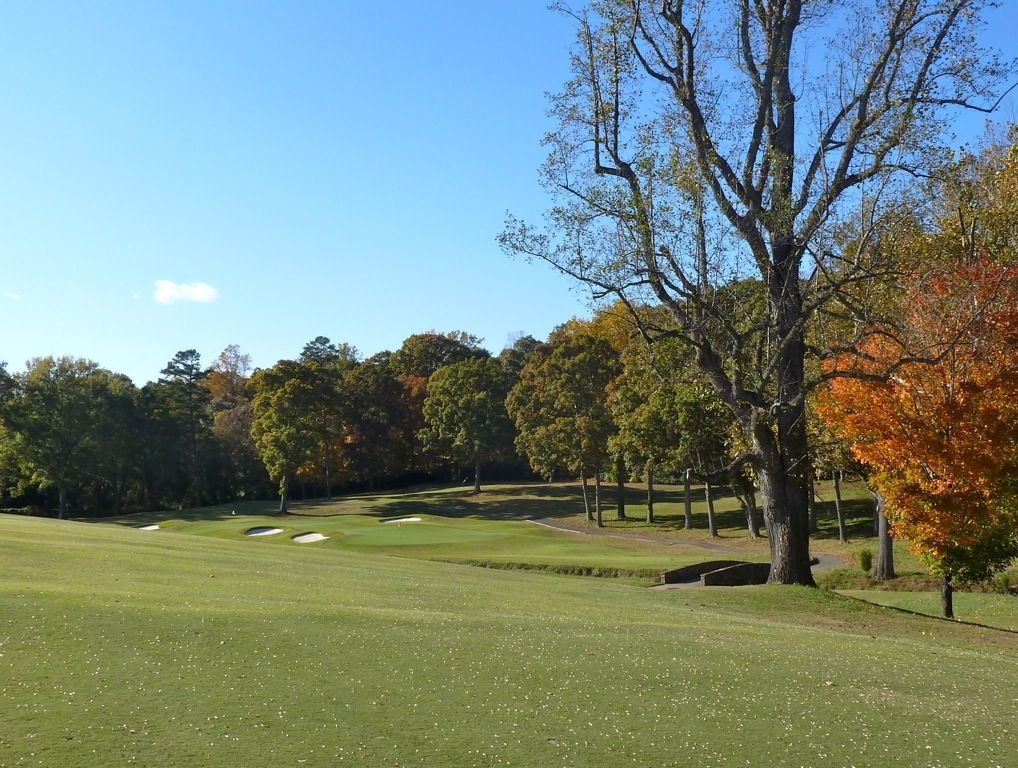
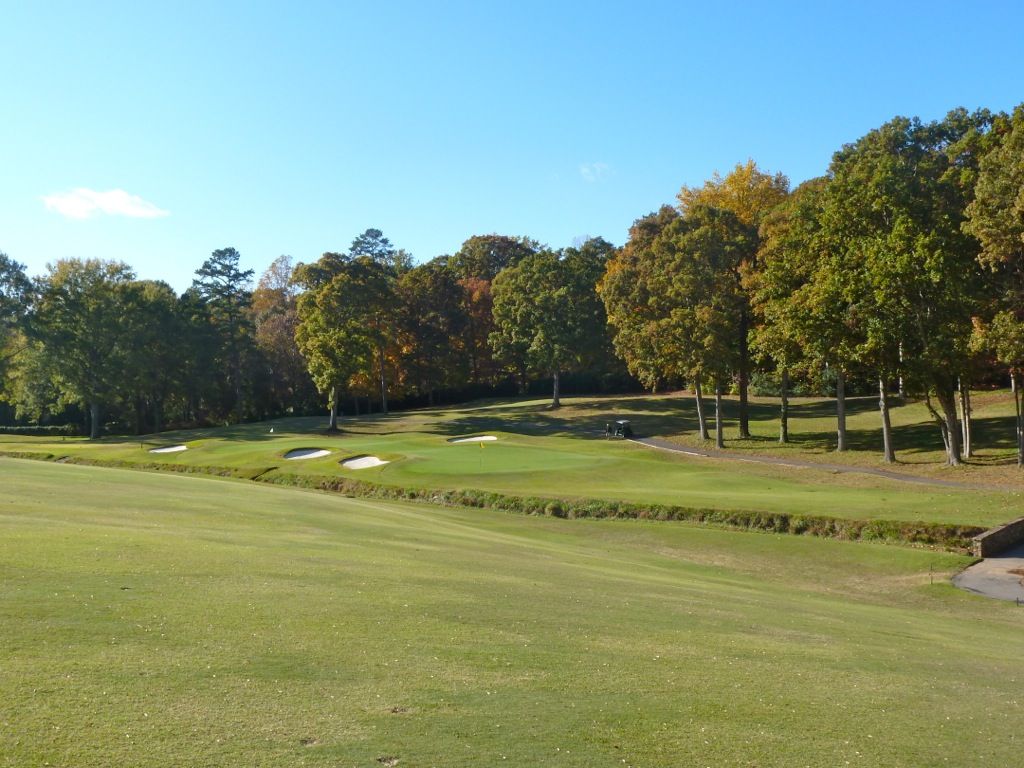
The green is protected in front by a creek (same creek and a wildly tilted fairway will ensure a tricky lie is played from.
and a wildly tilted fairway will ensure a tricky lie is played from.
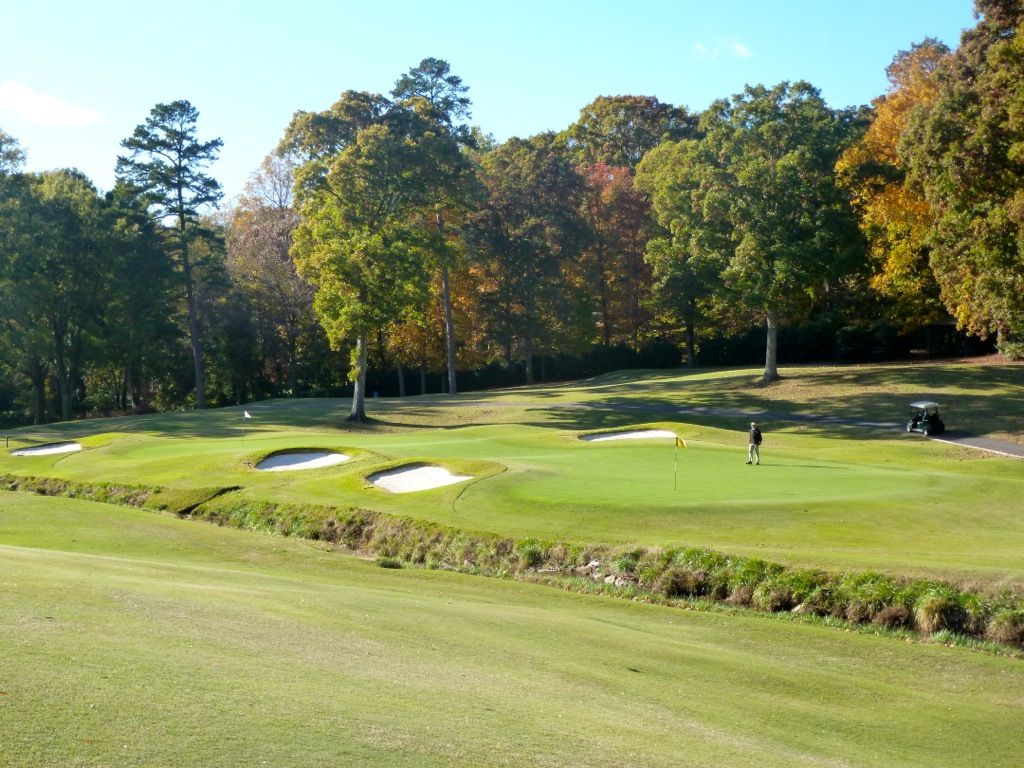
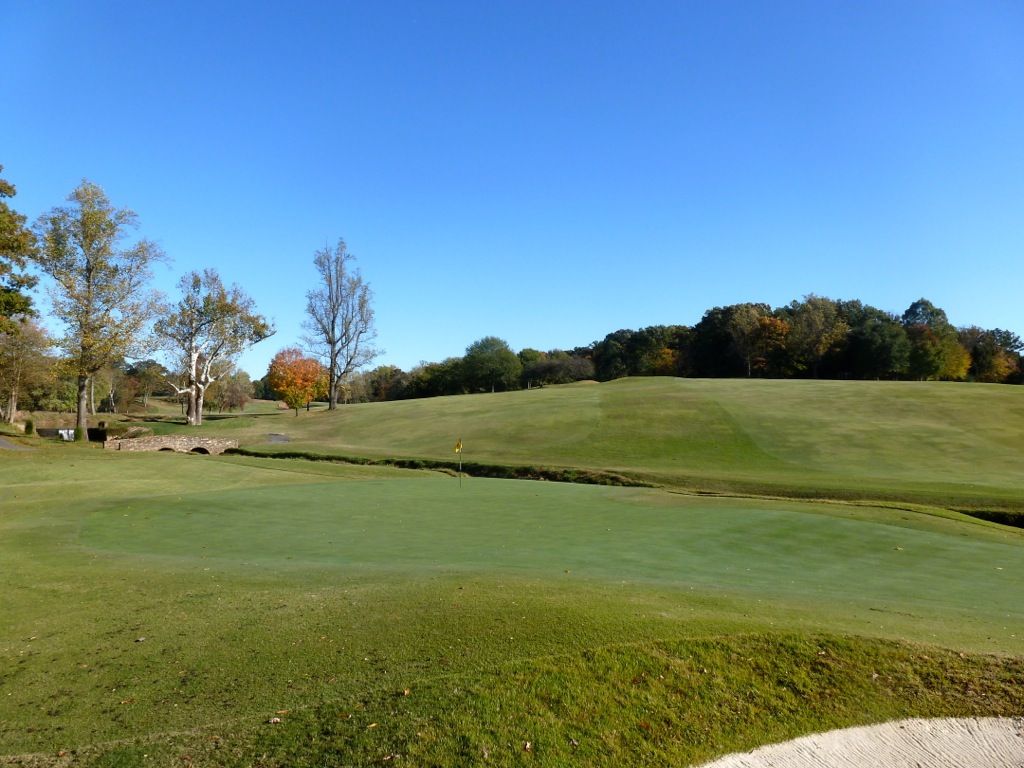

The tee shot has an extremely open feeling, as the 7th fairway shares a fairway with the 16th.

But, the golfer really wants to play his tee shot up the left side of the fairway, over the series of uniquely shaped bunkers.

The approach is best played from the left. Not an easy task as the fairway slopes significantly from left-to-right:

Not only is the green extremely small given the difficulty of this uphill, into the wind approach on a fairly long hole, but it is also guarded by a couple of very deep bunkers and a significant false-front:

The green lays at a 45-degree angle to the fairway and slopes from left-to-right. Not an easy task to find this green. Not an easy task to two-putt once on the green.
Green from behind:

Green from left:

Hole 11: Par 3, 210 Yards
Though maybe not the most interesting hole on the golf course, it is probably the prettiest. The same creek that wound in front of the 8th green once again comes into play, guarding the entire right-side of the hole.


A single bunker left protects against a bail-out...

And the green is one of the tamest on the course, with a tier on the left portion of the green and a feeder slope that allows clever golfers to get near a right-hand pin without challenging the water.


Hole 12: Par 4, 430 Yards
One of my favourite holes on the golf course. The green is straightaway but blind from view from the tee. The golfer is rewarded if he can keep his tee ball down the left side of this severely left-to-right sloping fairway. Balls that end-up on the right portion of the fairway will leave a completely blind approach to the green.

From the left portion of the fairway, depending on the length of the tee shot, at least some of the green may be in view. Once again, the green lay at an angle to the fairway, making this approach from a severely sloping lie a very difficult.

What cannot be seen from the fairway is the creek (yep, same creek) that has run down the right side of the hole and crosses the fairway 15 yards short of the green.

As contoured as any green at Old Town, the 12th green is a great of example of the Maxwell Rolls:

Hole 15: Par 3, 230 Yards
A very difficult par-3 with a creek (same creek) running down the entire left side of the hole. The green extends farther left than one can see (or imagine) from the tee. Shots can be run onto the right portion of the green, and a shot with a little leftward spin could use the green contours to find the left side of the green. It wouldn't be so far a stretch to say Bill Coore got the idea for his now template green as seen at 8 at Sand Hills from this green.
Tee View:


Green from right:


When on the 14th fairway, one gets a clear look at both the shape and contouring of the wild 15th green. A clever routing trick by Maxwell, allowing the golfer to preview the shot. Note the boomerang shape of the green.

Hole 17: Par 5, 590 Yards
A diagonal forced carry over a creek (same creek) with the longer carry protecting the shortest line into the green. Unless the hole plays into the wind, carrying the entirety of the creek will not be a problem for many.


The second shot is blind played over the crest of a hill. Shots must get within 150 yards of this double-green or the golfer will face a completely blind approach.
Approach from ~150


The green is protected in front by a creek (same creek
 and a wildly tilted fairway will ensure a tricky lie is played from.
and a wildly tilted fairway will ensure a tricky lie is played from.


No comments:
Post a Comment